| |
|
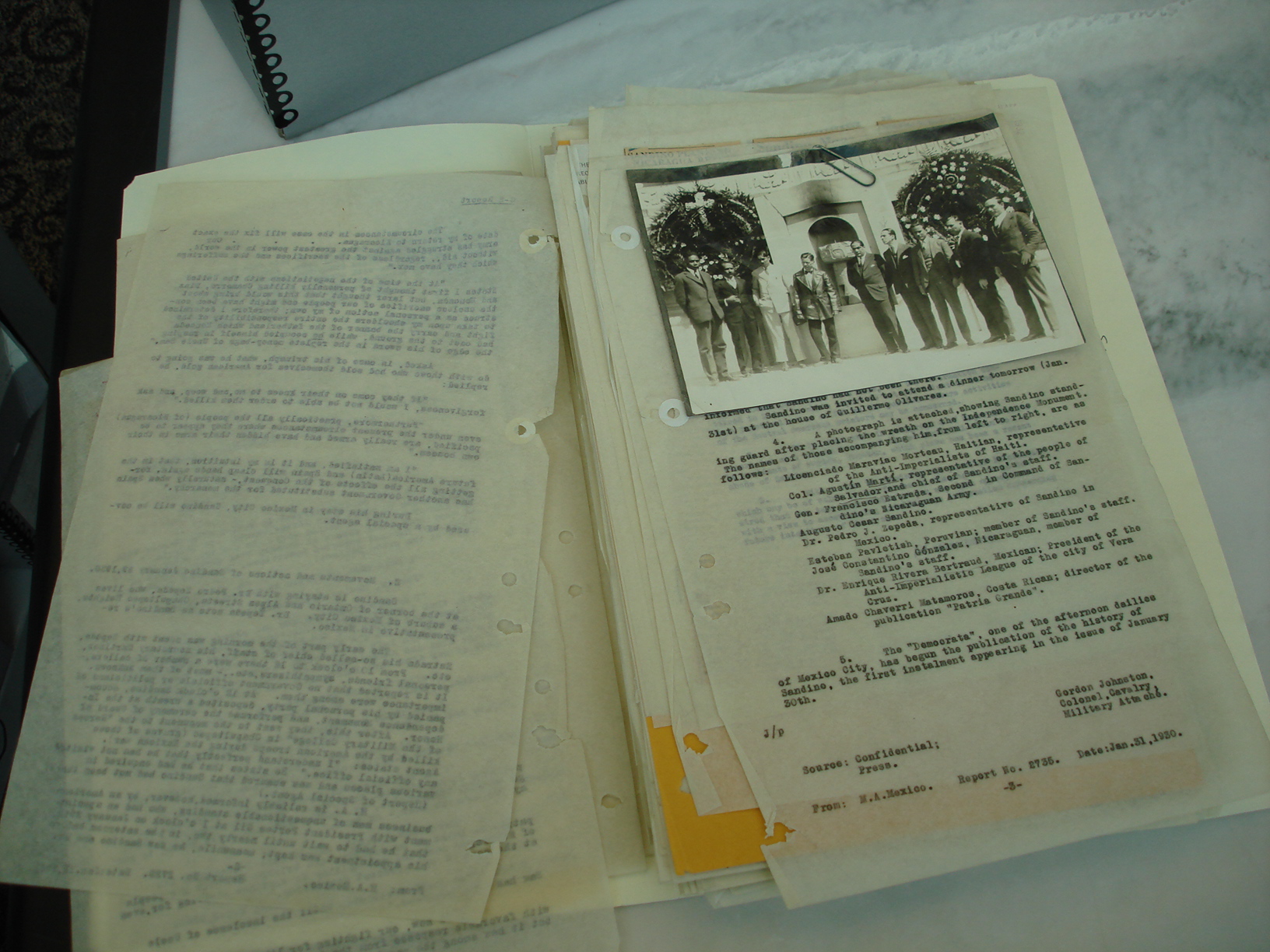 Page
7
of Fat File on Sandino Situation,
US Military Intelligence Division, 1928-33 Page
7
of Fat File on Sandino Situation,
US Military Intelligence Division, 1928-33
Documents are presented
here in their original sequence as found in three bulging file folders
titled "Sandino Situation,"
Record Group 165, Entry 77, Box
2653, US National Archives II,
College Park MD.
Grateful appreciation is extended to Mr. Brandon Ray,
Summa Cum Laude college graduate from
Ashford University in Iowa (with a B.A. in
History and a minor in Political Science) for
his exacting transcriptions on this page and the
previous six pages. Thank you Brandon!
|
|
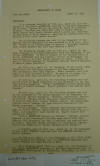
|
1. April 17, 1931.
Press Release on Nicaragua, US
State Dept.
"DEPARTMENT OF STATE ¶ FOR THE
PRESS ¶ APRIL 17, 1931 ¶
Nicaragua ¶ In a telegram
received at 7:30 p.m., April 16,
the Commander of the U.S.S.
ASHEVILLE reported to the Navy
Department as follows: “Cathey
Wilson and James W. Lloyd en
route New Orleans. Roy Kerr and
Harry Kerr safe in Puerto
Cabezas. Henry Spears left
Puerto Cabezas about a month
ago, believed to have gone to
South America. Have had no
communication with Gracias a
Dios since bandit attack.” ¶ The
following message was sent to
the Commander of the Special
Service Squadron and was
received at 9:40 a.m., April 16:
“There is no further news of
bandits. Airplane observation
showed bandits had left Cape
Gracias a Dios.” ¶ The following
message sent at 4:00 p.m., April
16, has been received by the
Navy Department from the
Commander of the U.S.S.
ASHEVILLE: “A Marine outpost of
the landing force of U.S.S.
ASHEVILLE shot and killed a
citizen of Nicaragua, who was
attempting to enter Puerto
Cabezas at night. A full report
is being forwarded to Commander,
Special Service Squadron, by
Marine plane tomorrow.” ¶ At
4:15 p.m., April 16, the
Commander of the U.S.S.
ASHEVILLE sent the following
message to the Navy Department:
“No information from Cape
Gracias. Radio operator came
down here in a boat to avoid
bandits. He expects to return
tonight and will send
information as soon as
possible.” ¶ At 4:15 p.m., April
16, the following telegram was
sent by the Chief of Naval
Operations to the Commander of
the Special Service Squadron:
“Direct SACRAMENTO proceed
Bluefields instead of Puerto
Cabezas. Report probable time
arrival Bluefields.” ¶ At 5:45
p.m., April 16, the following
message was sent by the
Commander of the Second Brigade
to the Commander of the Special
Service Squadron: “Guardia,
Bluefields, reports as follows:
‘Benson patrol returned,
reporting indications no bandits
Wawa Boom, Puerto Cabezas
region. Two amphibians cleared
Puerto Cabezas for Cape Gracias
observation with Darrah
passenger. Marston.’ ¶ “Second
message: ‘Radio operator Cape
Gracias now refugee in Puerto
Cabezas states bandits entered
town 2:00 p.m., today, and
apparently have burned it.
Expect report from planes any
moment.’ ¶ “U.S.S. ASHEVILLE
reports as follows: ‘Captain
Johnson reports he and
Lieutenant Schrider made patrol
over Cape Gracias this afternoon
and were fired upon and replied
with 14 bombs. Estimate bandit
strength 15, casualties unknown.
Planes are remaining at Puerto
Cabezas until Friday.’” ¶ A
telegram sent at 6:00 a.m.,
April 17, by the Commander of
the U.S.S. MEMPHIS reported that
the MEMPHIS arrived at Puerto
Cabezas. ¶ At 6:30 a.m., April
17, the Commander of the U.S.S.
ASHEVILLE reported by telegram
that the ASHEVILLE departed from
Puerto Cabezas for Cape Gracias
a Dios. ¶ In a telegram dated
7:30 a.m., April 17, the
Commander of the U.S.S.
SACRAMENTO reported to the Navy
Department that the SACRAMENTO
would arrive at Bluefields,
Nicaragua, at 10:00 a.m., April
17."
|
|
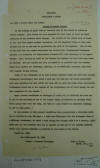
|
2.
April 14, 1931. G-2 Report
on the Attack on Puerto Cabezas,
Lt. Col. Fred T. Cruse, Military
Attaché, San José.
"NICARAGUA ¶ POPULATION & SOCIAL
¶ No. 2700 – Public Order and
Safety. ¶ Attack on Puerto
Cabezas ¶ On the morning of
April 14th we received word of
the attack by rebels on Puerto
Cabezas. This attack had been
expected for some time, at least
by local employees of the
Standard Fruit Company. The
details of the attack will be
known by the time this report
reaches Washington, but the
important thing is that such
attacks can now be put over in
practically any part of the
Republic. This is due to the
fact that the recent earthquake
has considerably disorganized
Government affairs, and
naturally all discontented
elements will take advantage of
the opportunity. Also, through
no fault of the Marines the
country has been left very
weakly guarded. Had the Capital
not been destroyed it is
probable that the Guardia might
have handled the situation,
although, as we previously
reported, they were very rapidly
losing control. ¶ Owing to the
withdrawal of so many Marines
isolated towns are left with
totally inadequate protection.
Just about a year ago San Juan
del Sur would undoubtedly have
been captured had this office
not been able to give the Costa
Rican authorities information
which led to the capture of the
ringleaders and of about twenty
men who were assembled for the
attack. ¶ Under present
conditions in Nicaragua it would
not be difficult for some one to
get to the garrison of one of
the larger towns, precipitate an
uprising which could easily take
over the town, and then it would
require an organized campaign to
get it back again. ¶ My own
opinion is that present
conditions have precipitated a
situation which can be settled
in only two ways - - take over
Nicaragua with the strongest
kind of a Military Government,
by which I mean occupy the
country with 5 or 6 cavalry
regiments and all the infantry
that can be spared, or get out
of the country entirely before
some serious disaster is
suffered at the hands of the
rebels. ¶ Report No. 1163 ¶ San
José--April 14, 1931 ¶ Source –
Personal knowledge. ¶ Fred T.
Cruse, ¶ Lieut. Col., F.A. ¶
M.A."
|
|
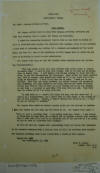
|
3.
April 11, 1931. G-2 Report
on Will Rogers, Lt. Col. Fred T.
Cruse, Military Attaché, San
José.
"COSTA RICA ¶ POPULATION &
SOCIAL ¶ No. 2820 – Foreign
Writers of Note. ¶ Will Rogers.
¶ Mr. Rogers arrived here by
plane from Managua yesterday
afternoon and left this morning,
also by plane, for Panama and
Venezuela. ¶ I asked him
concerning newspaper reports
that he had flown to Ocotal to
have an interview with Sandino
and explained that Sandino,
while he had achieved a good
deal of publicity was nothing
but a criminal and murderer of
the worst type, and that if a
man of the prominence of Will
Rogers were to visit him and
give it publicity it would be
most undesirable. ¶ Mr. Rogers
then told me that the Sandino
visit resulted from the
following circumstances:-- ¶
“For some years I have been good
friends with Doctor Pedro J.
Zepeda In Mexico City. I left my
home last Sunday, flew to El
Paso and on Monday flew to
Mexico City. I left Mexico City
Monday evening by train for Vera
Cruz, to get the Pan-American
for Nicaragua. Just before the
train started Doc, that is
Zepeda, came aboard and asked me
if it was right that I was going
to Nicaragua. I told him it was
and he said: I want you to see
Sandino. Just then the train
started, Doc called through the
window to his chauffeur, and
then stayed on the train with me
for about 50 miles. During this
time he told me that he could
arrange for me to see Sandino at
any time - - in fact he said
Hell I’ll come with you now.
They wont [won’t] dare to bother
me if I am along with you. ¶ “I
said hold on - - that’s all
right for you, but how about me?
I said I am a newspaperman, and
I don’t want to land right in
the middle of any of your
politics. Anywah [Anyway], I
didn’t believe Doc could do it -
- that is get me through to
Sandino.” ¶ Mr. Rogers then
asked me whether Zepeda could
get him through to Sandino. I
told him Zepeda was the only man
who COULD do it. Mr. Rogers then
said - - ¶ “This is just a
scouting trip. I am coming back
here later. I saw enough in
Nicaragua to know that you
couldn’t get to Sandino through
that country. When I come back
I’ll come in by Honduras and if
Doc can fix it I am going to try
to have an interview with
Sandino.” ¶ In view of what Mr.
Rogers will undoubtedly find out
during the remainder of his
Central American trip I believe
that he will not actually give
Sandino the enormous prestige
that would result from a visit
by Will Rogers. ¶ Report No.
1159 ¶ San José--April 11, 1931
¶ Fred T. Cruse, ¶ Lieut. Col.,
F.A. ¶ M.A."
|
|
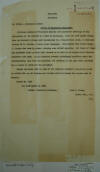
|
4.
April 6, 1931. G-2 Report
on Return of Nicaraguan
Emigrados to Costa Rica, Lt.
Col. Fred T. Cruse, Military
Attaché, San José.
"NICARAGUA ¶ POLITICAL ¶ No.
3700-b – Political Leaders ¶
Return of Nicaraguan Emigrados.
¶ Political enemies of President
Moncada took immediate advantage
of the destruction of the
Capital to return to Nicaragua.
From San José Adolfo Ortega Diaz
and Norberto Salinas left
immediately in a Pan-American
plane, as representatives of La
Tribuna, a Costa Rican
newspaper. From Mexico City
Doctor Pedro J. Zepeda also came
by plane, bringing some relief
supplies. All three of these men
preceeded [proceeded] their
arrival with threats as to what
would happen should Moncada
interfere with them. As all
occupied somewhat privileged
positions under the
circumstances, they were not
molested, but needless to say
just their presence was a source
of worry for the President. ¶
Zepeda announced that in view of
the disaster Sandino’s
operations would be called off,
as all Marines and Guardia would
be needed for rescue work in
Managua. ¶ Report No. 1147 ¶ San
José--April 6, 1931 ¶ Source –
Personal knowledge. ¶ Fred T.
Cruse, ¶ Lieut. Col., F.A. ¶
M.A."
|
|
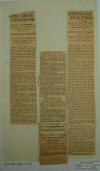
|
5.
February-March 1931. Press
clippings: Feb 22: "Offers
Armistice in Nicaraguan War,"
New York Times.
March 11: "Sandinistas Claim
Five Big Victories," New
York Times.
March 28: "U.S. Sympathizers
Supplying Sandino," AP.
"OFFERS ARMISTICE IN NICARAGUAN
WAR ¶ Sandino’s Representative
in Mexico Would ‘Intercede’ When
the Marines Leave. ¶ WASHINGTON
SPURNS OFFER ¶ Says Fighting
Must Stop Anyway and Holds No
Faith in Any Promise of Rebel
Chief. ¶ MEXICO CITY,
Feb. 21 (AP).—An offer to
“intercede” in the Nicaraguan
guerrilla warfare with the
object of putting an immediate
halt to fighting there was made
here today by Dr. Pedro Zepeda,
foreign representative and
trusted emissary of the
insurgent leader, General
Agustino Sandino. ¶ Dr. Zepeda
suggested that arrangements be
made to cease offensives on both
sides. In return for a guarantee
against attack in his mountain
strongholds he said that he
believed Sandino might agree to
desist from raids on towns and
lines of communications. ¶
Inasmuch as the United States
Government has announced its
intention of withdrawing the
marines from Nicaragua, Dr.
Zepeda said, there is no use of
prolonging the warfare during
the time it takes to accomplish
this, Sandino already having
indicated that he would lay down
his arms when—but not before—all
the marines are gone. ¶ He
offered to take an airplane to
Nicaragua and personally to
confer with Sandino on the
matter if he were sure it would
be favorably received by the
Moncado [Moncada] Nicaraguan
Government and the American
authorities. ¶ Dr. Zepeda said
that the insurgents had seven
killed and seventeen wounded in
fighting thus far this week in
the El Tule region, near Ocotal,
but asserted that the government
forces lost forty dead, while
three American Marines and seven
members of the Guardia were
wound- [wounded] by the
insurgents. ¶ A little more than
a week ago, he said, the
Sandinistas took the town of
Somoto but evacuated it after a
few hours in the face of an
offensive by Marine aviators.
One of the planes dropped a bomb
on the home of General Camilio
Lopez Arias, president of the
Nicaraguan Senate, and destroyed
it. ¶ “We shoot all our
prisoners,” he said. Asked to
repeat his statement, he said:
“Yes, we shoot them. You think
that is horrible. It is. But it
is in retaliation for the same
kind of treatment. Moncado’s
[Moncada’s] men shoot all of our
men that they capture.” ¶
Washington Spurns
Armistice. ¶
WASHINGTON, Feb. 21
(AP).—American officials said
today no agreement for an
armistice was necessary to end
hostilities between Nicaraguan
Government forces and the
insurgent forces under Agustino
Sandino. ¶ Hostilities would
cease, one high official said,
the moment the rebels laid down
their arms and returned to
gainful occupations. No formal
arrangement is necessary for
such action. The ending of
hostilities, it was added, is
solely a matter for the
insurgents themselves. ¶
Officials here would not look
with favor on an agreement
subscribed to by Sandino. The
State Department holds a
previous agreement by him to
abide by a settlement designed
to end civil strife in
Nicaragua. All of the insurgent
leaders were said to have abided
by the settlement excepting
Sandino, despite his written
undertaking to do so. ¶ The
recent effecting of a plan by
Secretary Stimson and President
Moncada to press a vigorous
campaign against the Sandino
forces was regarded as the
reason for the offer by Dr.
Pedro Zepeda, foreign
representative of Sandino, in
Mexico City, to “intercede” with
a view of ending the fighting. ¶
Bandits Ambush Patrol.
¶ Wireless to THE NEW YORK
TIMES. ¶ MANAGUA, Feb.
21.—Bandits ambushed the
National Guard patrol near
Somoto today. Details of the
fighting are unknown, but two
guards are known to have been
wounded. ¶ Last night a bandit
group ambushed a National Guard
patrol under command of
Lieutenant McGorkle at Pataste,
south of Somoto, according to a
report received at headquarters
in Managua. The report requested
a plane for the transportation
of the wounded. A marine plane
left early today. ¶ U.S.
Sympathizers Supplying Sandino ¶
Arms and Money Are Being Sent
Nicaraguan Rebels by Friends
Here. ¶ (Associated
Press.) ¶ Marine Corps officials
said yesterday that followers of
Gen. Augustino Sandino,
Nicaraguan insurgent chieftain,
are being supplied with funds
and ammunition from the United
States. ¶ Renewed activity since
December by the insurgents
operating in the [fold in paper]
and Honduran border. ¶
SANDINISTAS CLAIM FIVE BIG
VICTORIES ¶ Nicaraguan
Insurgent’s Agent in Mexico
Tells of Killing 150 Guardsmen
in Battles. ¶ REPORTS ROUT OF
MARINES ¶ His Men Have Captured
2,000 Rifles From Americans, He
Asserts—Washington Hears
Otherwise. ¶ MEXICO
CITY, March 10 (AP).—General
Augustio Sandino, the Nicaraguan
insurgent, in reports sent here
to Pedro Jose Zepeda, his
representative in Mexico, says
he has won five recent battles
with Nicaraguan National
Guardsmen, killing 150 of them
and that he has captured
considerable American military
equipment. ¶ The most recent
battle, the Sandino headquarters
at Segovia reported, was a
four-hour engagement on March 1
in which 1,000 mounted
Sandinistas captured Daraili,
Jinotega Department. The report
said that 100 guardsmen were
killed and after the town was
captured that a relief column
under Lieutenant Clark, a United
States Marine, was put to flight
and all its equipment captured.
¶ In another engagement at El
Coyolito, the report said, the
guardsmen lost twenty-seven dead
and ten wounded, while the
Sandinistas lost fourteen dead
and twenty-five wounded. The
insurgents said they had
captured there eighty rifles,
ten pistols, two machine guns
and 3,000 rounds of ammunition.
¶ In another engagement troops
led by General Jose Leon Sontos
[José León Díaz] defeated a
force of National Guardsmen
under Captain Williams at
Somoto, according to the
Sandinistas, and many dead
National Guardsmen were left on
the field, the insurgents losing
five dead and seven wounded. ¶
On Feb. 27 Sandinistas under
General Miguel Angel Ortiz
[Miguel Angel Ortéz], the report
assests [asserts], fought with
National Guardsmen at Puebla
Nuevo [Pueblo Nuevo] and put
them to flight, capturing
considerable war material. That
same night forces under General
Estrada drove guardsmen out of
the town of Imaili and captured
a flag and medical equipment. ¶
The insurgent general insists
that his men now have more than
2,000 American rifles, all of
which were captured in battle. ¶
Washington’s Records
Differ. ¶ WASHINGTON,
March 10 (AP).—The Marine Corps
said today its records showed
one Nicaraguan National
Guardsman and three civilians
had been wounded by followers of
General Sandino in the last five
engagements between guardsmen
and revolutionists in Nicaragua.
¶ The record shows estimates of
seven Sandinistas killed and
thirty-one wounded in the same
engagements. Three rebels were
captured. ¶ It was explained
that all of the reports of
rebels killed or wounded were
estimates because the
Sandinoistas [Sandinistas] carry
their killed and wounded off the
battlefield while fighting
continues."
|
|
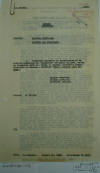
|
6.
March 31, 1931. G-2
Translation of "Where Sandino
Gets His Arms," Excelsior, Mexico City, 29
March 1931, Col. Gordon
Johnston, Military Attaché, p.
1.
"G-2 Report ¶ 3850: ¶ MEXICO ¶
POLITICAL ¶ SUBJECT: Foreign
Relations. ¶ SANDINO and
Nicaragua. ¶ 1. Forwarded
herewith is translation of an
article appearing in “Excelsior”
of March 29, 1931, being an
interview with Dr. Pedro J.
Zepeda, Sandino’s representative
in Mexico,- entitled “Where
Sandino Gets His Arms”. ¶ Gordon
Johnston, ¶ Colonel, Cavalry. ¶
Military Attaché. ¶ Source: As
stated. ¶ J/p ¶ From:
M.A.Mexico. ¶ Report No. 3293. ¶
Date: March 31, 1931. . . . "
|
|
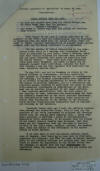
|
7.
March 31, 1931. G-2
Translation of "Where Sandino
Gets His Arms," Excelsior, Mexico City, 29
March 1931, Col. Gordon
Johnston, Military Attaché, p.
2.
" . . . Article appearing in
“EXCELSIOR” of March 29, 1931. ¶
(Translation) ¶ WHERE
SANDINO GETS HIS ARMS.
¶ He does not receive them from
the United States, but by force
takes them from the Marines. ¶
Emphatic Statement. ¶ Dr. Pedro
J. Zepeda says that the rifles
are American Army rifles. ¶ With
regard to the cabled reports
published by “Excelsior” to the
effect that the Revolutionary
Army of Nicaragua is receiving
arms and funds from the United
States, Señor don Pedro J.
Zepeda, General Representative
of General Cesar Augusto
Sandino, made the following
statements to us yesterday: ¶
“In the section of cables
transmitted by the Associated
Press there is a message from
Washington dated March 27,
published in your daily, today’s
edition, which says that ‘Marine
officers had declared that
Sandino’s men are being
furnished with money and
munitions from the United
States.’ They state also that
investigations made since
December, the month in which the
insurgents renewed their
activities, revealed the fact
that Sandino’s men are well
supplied with munitions and
arms, including machine guns.” ¶
“In May, 1930, and not in
December as stated by the Marine
officers in Washington,-
military operations were resumed
in Nicaragua for the purpose of
reconquering our autonomy, and
foreign correspondents have
approached me on several
occasions, endeavoring to obtain
data as to our source of
military supplies, and in a
malevolent and insidious manner
insisted in mentioning the names
of some Latin-American
Governments as sympathizers of
our movement and as possible
supporters of our armed
conflict. I then declared,
emphatically, that the only
source of our supplies of arms,
munitions and machine-guns was
from the arsenals themselves of
the North American Government,
the intermediaries used for
securing these supplies and
having them transported to our
redoubts of the Segovias, being
marines themselves, who
frequently fall in ambushes and
overcome by our soldiers. ¶
“Scarcely twenty days ago I made
the definite declaration,
through the Associated Press,
that if some day the promises of
the State Department to withdraw
the invading forces from our
country, were complied with, I
would take great pleasure in
inviting a group of
correspondents, especially North
Americans, to be present when
the troops of our heroic General
Sandino were disarmed, that they
might see for themselves that
all the arms in service, as well
as the field tents, saddles,
pistols, and machine guns, bear
the shield of the Government of
the United States of North
America. ¶ “I am glad that at
last the Marine officers admit,
even if vaguely, that there is
an army unit in Nicaragua,
organized and equipped, and that
the easy victories credited
daily to the invading soldiers
are nothing more than inventions
to create the impression in the
United States that the struggle
is nearly over and that the
casualties among the American
soldiers are not actual and
effective. . . . "
|
|
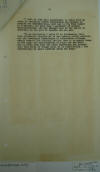
|
8.
March 31, 1931. G-2
Translation of "Where Sandino
Gets His Arms," Excelsior,, Mexico City, 29
March 1931, Col. Gordon
Johnston, Military Attaché, p.
3.
" . . . I wish to take this
opportunity to state that my
offer of mediation toward
terminating the crusade of
cruelty and extermination, just
now at its full height in
Nicaragua, was made from a
sentiment of natural
humanitarianism, and not through
lack of the spirit of sacrifice
on the part of Sandino and his
men. ¶ “To me personally I think
it is distressing that this
systematic destruction of our
country should continue, and the
continuous bombardment of
defenceless villages simply
because the invaders believe
them to be supply bases of our
army; the assassination of women
and children; but it would seem
that the State Department has
ordered that this state of
things shall go on
indefinitely,- and indefinitely
we shall continue doing our
duty."
|
|
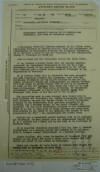
|
9. March 31, 1931.
Naval Intelligence Report on
Nicaraguan Good-will Mission to
El Salvador & Guatemala, Also
Data On Sandinista Agents, from
Agent "G".
"A Nicaraguan Good-will Mission
composed of Dr. Julian Irias,
Nicaraguan Minister of foreign
affairs, with Drs Largaespada
and Portocarrero as secretaries
attended the inaugural
ceremonies at El Salvador 1
March 31 and the beginning of
the Presidential period in
Guatemala 15 March 31. ¶ Such at
least was the ostensible reason
for their visit. ¶ It is,
however reliably known that the
mission secretly gestioned the
Salvadoran Government to the end
that such government appeal to
the Honduran Government to the
effect that Honduras give a
closer cooperation to Nicaragua
in the suppression of banditry.
¶ It is further known that in
Guatemala the same proposal was
made regarding Honduras and
Guatemala. Also that the
Guatemalan Government put up
10,000 dollars to buy off Dr.
Zepeda (Sandino’s backer and
propagandist) in Mexico. Further
that such money as needed should
also be put up by Guatemala in
order to buy off Sandino. This
money was later to be paid back
by Nicaragua. (The idea being
evidently, to counteract
pro-Sandino propaganda by having
some country other than
Nicaragua take steps to get him
out of the field.) ¶ The
suggestion made to each country
were turned down by both
Salvador and Guatemala. Dr.
Andres Largaespada also asked
that Guatemala request the
United States to allow
Nicaraguan citizens to arm
themselves. This question
happened to be referred, via a
devious route, to the Naval
Attaché, who answered: “If you
allow Nicaraguan citizens to arm
themselves there is no way to
keep some of these weapons and
ammunition from falling in the
hands of the bandits. The answer
to that proposition is: No.” –
Dr. Largaespada was turned down.
¶ Sandino has a remarkable
mental backing both in El
Salvador and Guatemala. Certain
people have the unshakeable
belief that he is a patriot and
a hero, and do not wish to be
convinced of anything else. ¶ It
is reported (believed reliable)
that Dr. Jose J. Zamorra
(Salvadoran) is a message center
for Sandino in El Salvador. That
J. Antonio Lacayo (Nicaraguan)
is a message carrier. ¶ Aleman
Bolaños, well known Guatemalan
of Guatemala City had Sandino as
his guest for quite a while
after Sandino had left Mexico
and prior to his return to
Nicaragua. ¶ Metal and Plaster
of Paris busts of Sandino were
freely and openly sold in
Guatemala at that time."
|
|
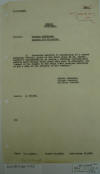
|
10.
March 13, 1931. G-2
Translation of "Seventy-Four
Combats Have Already Taken Place
This Year In Nicaragua,"
Excelsior,
Mexico City, 29 March 1931, Col.
Gordon Johnston, Military
Attaché, p. 1.
"G-2 Report ¶ 3850: ¶ MEXICO ¶
POLITICAL ¶ SUBJECT: Foreign
Relations: ¶ SANDINO AND
NICARAGUA. ¶ 1. Forwarded
herewith is translation of a
recent newspaper article, given
to the local press by Dr.
Zepeda, Sandino’s representative
in Mexico,- entitled
“Seventy-four Combats have
already taken place this year in
Nicaragua” and “Appeal of Dr.
Zepeda to the other Latin
American countries to put a stop
to the invasion of his country.”
¶ Gordon Johnston, ¶ Colonel,
Cavalry. ¶ Military Attaché. ¶
Source: As stated. ¶ J/p ¶ From:
M.A.Mexico. ¶ Report No.3266. ¶
Date: March 13, 1931. . . . "
|
|
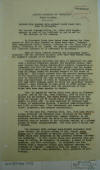
|
11.
March 13, 1931.
G-2 Translation of "Seventy-Four Combats Have
Already Taken Place This Year In
Nicaragua," Excelsior,
Mexico City, 29 March 1931, Col.
Gordon Johnston, Military
Attaché, p. 2.
" . . . (Translation) ¶ ARTICLE
APPEARING IN “EXCELSIOR” ¶ March
10, 1931. ¶ SEVENTY-FOUR COMBATS
HAVE ALREADY TAKEN PLACE THIS
YEAR IN NICARAGUA. ¶ The General
Representative, Dr. Pedro José
Zepeda, appeals to rest of the
Continent to put an end to the
invasion of his country. ¶ In
Nicaragua there have taken place
during the first months of 1931
as many combats as there were
days. Seventy-four engagements
during January, February and the
first days of March,- according
to Dr. Zepeda, the general
representative of the “Ejercito
Defensor de la Soberanía de
Nicaragua.” ¶ Some of these
combats between the Nicaraguan
“guerrilleros” and the American
marines, have been very bloody
ones. Dr. Zepeda’s account is as
follows: ¶ “Methodically
following the plan of beginning
the year with a violent
offensive against the invading
forces, General Sandino has
staged seventy-four combats,
increasing in intensity and toll
of lives as time passed; and the
people of Nicaragua have become
convinced of the imperative
necessity of giving frank and
decided support to the cause of
liberty. The latest reports from
the general headquarters of the
Segovias, indicate that the
marines, in their vain zeal to
exterminate our army between now
and next June,- when the
Department of State at
Washington has promised to let
José María Moncada carry on
alone the so-called
“pacification”,- have ventured
in some cases to offer greater
resistence [resistance], with
the result that the casualties
on both sides have been much
greater in number. ¶ “The ‘El
Coyolito” battle which took
place on February 24, 1931, led
by our Col. Juan Valdivia, left
us with 14 killed and 25
wounded, the enemy having
abandoned on the field 10
wounded and 27 killed, which
presumably they were unable to
carry off. We also captured 80
American army rifles, 10
regulation pistols, 2 machine
guns (dismantled), and 3,000
cartridges. This detachment was
commanded by Lieut. Alexander,
who escaped miraculously. ¶ “On
the same day, February 24th,
Gen. José León Díaz’s column
attacked and defeated Capt.
Williams in the Somoto
mountains, with many casualties,
number unknown, as our soldiers
retreated from the site of the
ambuscade before breaking camp,
on account of the imminent
arrival of a strong column of
enemy reinforcements. Our side
lost 5 killed and 7 wounded. ¶
“On February 26th another
hard-fought encounter took place
between the bizarre column of
Gen. Miguel Angel Orthez and a
detachment of marines stationed
in Pueblo Nuevo which were
dispersed in the mountain
between Jinotega and Matagalpa.
In this action there were
captured from the enemy 60
rifles, 23 blankets, 14 pistols,
2 cases of hand-grenades, and
1600 cartridges. At nightfall
our Gen. Estrada made a surprise
attack upon another American
detachment in “Imaili”,
capturing from the enemy a flag,
2 surgical chests, some
medicines, and a quantity of
provisions. . . . "
|
|
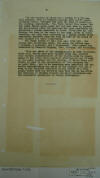
|
12.
March 13, 1931.
G-2 Translation of "Seventy-Four Combats Have
Already Taken Place This Year In
Nicaragua," Excelsior,
Mexico City, 29 March 1931, Col.
Gordon Johnston, Military
Attaché, p. 3.
" . . . On the morning of March
1st a column of 1,000 men, well
mounted, with 12 Thompson
machine guns and 20
bomb-throwing rifles, attacked
and took the town of Daraili, in
the Jinotega Department. The
fight lasted four hours, but the
enemy forces under seige [siege]
did not have time to receive any
aid, because after the garrison
had been completely annihilated,
a column commanded by Lieut.
Clark, came up, and, finding the
town in the hands of our army,
tried to avoid fighting, but
they were overtaken by a flying
column which completely defeated
them and they left in the hands
of Gen. Salgado all their
impedimenta. ¶ The enemy losses
in this case were over 100. Our
losses were relatively small,
but among our killed were 1
colonel, 3 captains, and 1
lieutenant. This combat was
commanded by Generals Salgado,
Díaz, Blandon, and Hernandez. ¶
“This new phase of the struggle,
with so much bloodshed, which
will surely grow more violent
every day, prompts this General
Representative of the Sandino
army to appeal again to the
other Latin-American countries,
to pay no heed to the empty
speeches and the parades, of
which there will surely be many
in the celebration of “Pan
American Day” on April 18th,-
but to do something more
practical for the better
understanding and unity of our
peoples, and put a stop to the
flagrant violation of the rights
of a free people which sees its
favorite sons fall one by one,
while the theories of Abraham
Lincoln are heard everywhere,
and the democratic principles of
George Washington."
|
|
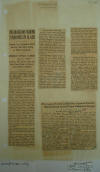
|
13. January 4-5, 1931.
"Nicaraguans Wound 2 Marines In
Clash," and "Nicaragua Orders
Cadets Out Against Bandits;
Rebels Being Armed From Unknown
Sources," New York Times.
"NICARAGUANS WOUND 2 MARINES IN
CLASH ¶ Bandits Try to Ambush
Patrol Hunting Them After
Killing of Eight Americans. ¶
MIDNIGHT ATTACK IS MADE ¶
Outlaws Are Driven Off and New
Detail Goes in Pursuit—Guard
Reports Fights. ¶
Special Cable to THE NEW YORK
TIMES. ¶ MANAGUA, Nicaragua,
Jan. 3.—Two more United States
marines were wounded in a clash
with bandits early today. ¶ They
were shot down in what appears
to have been an attempt of 150
outlaws to ambush the marine
patrol of fifty men scouring the
jungle for the band that killed
eight marines Wednesday. ¶ The
two men were brought to Managua
by plane this morning. One of
them, James Robert Earnhardt,
was hit in the spine and is
seriously injured. His nearest
relative is his mother, Mrs.
Sarah Earnhardt, of Concord, N.
C. The other man is David Monroe
Kirkendale, who probably will
recover. His nearest relative is
Walter Carlson of Chicago. ¶ The
patrol, fifty men under command
of Captain Ernest L. Russell,
established contact with the
bandits south of Ocotal, between
Totogalpa and Ocotal. The
bandits had made a demonstration
at the eastern outskirts of
Ocotal, Nueva Segovia, about 11
o’clock last night. Several
shots were fired into the town
and bombs exploded near the
outskirts, but the bandits made
no effort to enter the town and
no casualties were sustained by
the inhabitants or the marines.
¶ The commanding officer at
Ocotal, Major Dearing, reported
by radio at 1:30 A. M. today
that everything was quiet. ¶ The
marine patrol under Captain
Russell, returning to Ocotal
from Palacaguina, established
contact with the bandits,
estimated at 150 men, at about 1
o’clock this morning. The strong
marine detachment drove the
bandits from their ambuscade and
continued to Ocotal. ¶ Second
Patrol Goes Out. ¶ Another
marine patrol left Ocotal at
daybreak today to reconnoitre
the scene, try to regain contact
with the bandits and ascertain
the number of bandit casualties.
The identity of the bandit
leader is not definitely known,
but he is thought to be a
Sandino chieftain, Miguel Ortiz
[Miguel Angel Ortéz]. ¶ The
commanding officer reported this
morning that all telegraph lines
leading from Ocotal were down
and that communication was being
maintained by radio between
Managua and Ocotal. ¶ The
Nicaraguan National Guard
reports that the bandit group is
thought to be the same that
ambushed and killed a party of
marines Wednesday and attacked a
guard barracks on Jan. 1 at 5 A.
M., first with rifle shots, then
threw bombs, whereupon the guard
and armed civilians returned the
fire, and the bandits were
driven off in the direction of
Palacaguina. ¶ The National
Guard also reports a contact
yesterday between ten guardsmen
under command of Lieutenant
Pulver and a bandit force
estimated at 150 at Cacao,
Northwest Chaquitillo. The
bandits were entrenched behind
stone walls. The fight had
lasted an hour when a patrol of
eighteen guardsmen under command
of Lieutenant Kerns joined the
Pulver patrol and drove the
bandits from their position. Two
bandits are known to have been
killed. ¶ Lieutenant Navarrete,
with seventeen guardsmen, poined
[joined?] the other two patrols
after the contact and continued
the pursuit north. ¶ The present
bandit strength is estimated at
600, including all parts of the
northern provinces. The increase
in banditry is attributed to the
influence of Sandino propaganda,
the lack of work in the northern
provinces and the forcing of men
to join the bandits. Also the
beginning of the coffee season
entices bandit groups to
endeavor to exact tribute from
the large coffee growers. ¶
Bodies to Be Brought
Home. ¶ WASHINGTON,
Jan. 3 (AP).—The bodies of the
eight marines killed in
Nicaragua Wednesday will arrive
in this country on Friday, Jan.
30. ¶ Marine officials today
said the U. S. S. Vega, a cargo
ship, would convey the bodies of
seven to Hampton Roads, Va.,
while the body of Sergeant
Arthur M. Palrang will be taken
to San Francisco on the army
transport Chateau Thierry. ¶
Privates Joseph A. Harbaugh of
Washington, Pa., and Lambert
Bush of Bay Minett, Ala., will
be buried at Arlington National
Cemetery, while the other bodies
will be sent to their home
addresses. Sergeant Palrang
lived at Fort Lyon, Co. The
other five were Privates Irving
W. Aron of Brooklyn; Edward
Elliott of Des Moines, Iowa;
Frank Kosieradski of Buffalso
[Buffalo], Richard J. Litz of
Indianapolis and Joseph A.
McCarthy of Chillicothe, Mo. ¶
Nicaragua Orders Cadets
Out Against Bandits; Rebels
Being Armed From Unknown Sources
¶ By Tropical Radio to THE NEW
YORK TIMES. ¶ MANAGUA,
Nicaragua, Jan. 4.—In order to
throw every available force into
the field against the bandits,
National Guard headquarters
announced today that they are
sending to Ocotal early this
week thirty-seven Nicaraguan
cadets who have been in training
at the cadet school. This
detachment will be accompanied
by three Americans and one
Nicaraguan officer. ¶ Marine
headquarters report that the
condition of Private Earnhardt,
who was wounded early yesterday,
is extremely serious. The
doctors believe his chances for
recovery are slight. The other
three wounded men probably will
recover. ¶ Earnhardt was wounded
in a skirmish between bandits
and the patrol under Ernest L.
Russel, which went in pursuit of
the band that killed eight
marines Wednesday. ¶ National
Guard headquarters report that
in the month of December
guardsmen had fourteen contacts
with outlaws, in which one
Nicaraguan Guard was killed and
one wounded, while bandit
casualties amounted to
twenty-three killed, four
wounded and six captured. ¶ For
economic reasons the National
Guard has been gradually reduced
from 2,200 on Nov. 1 to 1,850.
It is understood that this
process of gradual reduction
will continue until the force
numbers 1,650, this reduction
being made without materially
affecting the oumber [number]
actually operating against
bandits. ¶ It is generally
thought that the present bandit
activity is due to an effort by
Augusto Sandino to unite all
outlaw groups. A plentiful
supply of ammunition apparently
is now available for their use,
judging from recent contacts,
which seems to indicate that the
outlaws have received aid from
some undetermined source. Rumor
places this source outside of
Nicaragua. Rumor also has it
that orders have been issued to
the outlaws to make special
efforts to fire at American
officers."
|
|
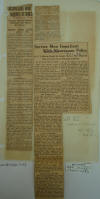
|
14. January 5-6, 1931.
"Nicaraguans Want Marines
Retained," New York Times,
and "Service Men Impatient With
Nicaragua Policy,"
Washington News.
"NICARAGUANS WANT MARINES
RETAINED ¶ President Moncada
Believes Withdrawal Now Would Be
‘Unwise.’ ¶ SENATE SEEKS FACTS
¶ Managua, Nicaragua, Jan. 5
(A.P.). President Jose Moncada
of Nicaragua believes it would
be unwise to withdraw American
Marines from the country at this
time, he told the Associated
Press today. The president said
he would like, however, to
insure additional cooperation of
Nicaraguans with the Marines in
an effort to stamp out banditry.
¶ “We have many patriotic
Nicaraguans,” he said, “who
would offer their services and
peculiar knowledge to give such
cooperation in an effort to
bring about lasting peace in the
bandit-infested regions” ¶ The
country, at the moment, he said,
has no funds with which to
increase the strength of the
national guard, but efforts are
being made to obtain a loan of
$1,000,000 from the national
bank. Part of this sum would be
used in the campaign against the
bandits and in constructing
highways to open up the northern
department, where their
activities are most pronounced.
¶ (Associated Press.)
¶ New attempts to force
the withdrawal of Marines from
Nicaragua, where eight were
killed last week, were initiated
yesterday in the Senate. ¶ A
resolution by Senator Johson
[Johnson], of California, the
ranking Republican on the
foreign relations committee,
requesting the Secretary of
State to transmit to the Senate
copies of all communications and
documents relating to the
landing and maintenance of the
Marines in Nicaragua since,
1924, was adopted without
debate. ¶ Senator King
(Democrat), Utah, at the same
time offered a resolution
requesting the immediate
withdrawal of all Marines from
Nicaragua. His motion was left
upon the table, subject to call
at any time. ¶ “I just want to
ascertain the facts, first,”
said Senator Johnson later in
explanation of his resolution.
“I think it well that we give a
little concern to our own
continent and our own boys at
this time when some are so
concerned about the troubles of
Europe.” ¶ State Department
officials indicated last night
that all those papers would be
sent to the Senate which are not
incompatible with public
interest if they were published.
This is the same position taken
by President Hoover and
Secretary Stimson last year when
the Senate asked for the papers
relating to the London naval
treaty negotiations. ¶ Several
unsuccessful attempts have been
made in the last four years in
the Senate to force the
withdrawal of Marines from
Nicaragua. President Coolidge
insisted that the troops be
maintained there three years ago
for the general election. Since
that time they have been
withdrawn gradually. ¶ The
United States had already
indicated to Nicaragua that it
would not supervise elections in
that country after the one next
year. Supervision for the
election in 1928 and next year’s
was agreed to in an exchange of
letters between the two
countries. ¶ The duties of the
Marines in Nicaragua were
summarized by the Secretary as
guarding the American Legation,
training the national guard of
Nicaragua and protecting
American lives and property. ¶
Lima, Peru, Jan. 5
(A.P.).—The newspaper
El Comercio in an editorial
today voiced sharp criticism of
the American policy of
intervention in Nicaragua,
declaring it mistaken and
unlikely to do any good service
for pan-Americanism and
international justice. ¶ The
editorial lauded the attitude of
the United States senators who
have demanded the withdrawal of
American Marines from Nicaragua
ended by praising the followers
of Gen. Sandino, whom it calls
“Liberty’s soldiers.” ¶
Service Men Impatient With
Nicaraguan Policy ¶ All U. S.
Marines Should Be Brought Home
or More Should Be Sent to Finish
Job, Is Prevailing Sentiment
¶ By WILLIAM PHILIP
SIMMS ¶ Either every Marine
should be brought home from
Nicaragua, or enough should be
sent down there to do the job
assigned to them. ¶ This
expresses but mildly the
sentiment I find in service
circles here, following the
killing of eight and the
wounding of four Marines in the
fighting which has flared up
again in the little Central
American republic. ¶ If
Washington intends to occupy
Nicaragua until it is pacified,
these observers feel, the
Administration should forget
politics and take the necessary
steps to accomplish the task in
a way which will be better for
the national prestige and better
for the Nicaraguans themselves.
¶ Face Hopeless Job
¶ If it does not intend to do
these things, the forces of
occupation should be brought
home as quickly as possible. ¶
As matters now stand, the
Marines are facing a hopeless
job. It will take a generation
of them to get anywhere.
Irregular warfare such as cost
the lives of a detachment of men
on New Year’s Eve will go on,
American prestige will dwindle,
and Latin American criticism of
our policy will grow constantly
more bitter. ¶ Despite official
reports that more than 1000
Marines are now in Nicaragua, I
am reliably informed that
actually there are only about
700. What with the work of
training the native
constabulary, paper work at
headquarters, keeping up supply
service, communications and
whatnot, inevitable in such an
expedition, it is said that not
more than 200 or so are
available for fighting. ¶
Country Impassable
¶ The Marines are stationed at
four or five outposts in the
jungles of the interior, subject
to attack at any moment. The
country is well nigh impassable,
save along faintly marked trails
thru the tangled growths.
Patrols are constantly on the
move, however, being absent two
or three weeks at a time. ¶ It
was such a detail as this that
was ambushed near Ocotal on New
Year’s Eve. They walked into a
carefully prepared ambush and
never had a chance from the
beginning. ¶ From the two
survivors, both severely
wounded, it was learned that at
least 300 guerillas were in the
deadly circle. Each side had two
machine guns, but every time the
Americans tried to use their
weapons they were sniped. The
Marine’s machine guns, with
ammunition, were captured by the
natives and sooner or later will
be turned on other Americans. ¶
Lasting Peace Far Off ¶
There is no such thing as a
rebel “army” in Nicaragua. Those
who killed the eight Marines are
believed to live in the region
and to have dispersed to their
farms after the fighting was
over. The relief force, brought
to the scene by a friendly
native, found only peaceful
farmers working on their land. ¶
Nicaragua will never see lasting
peace, Marines or no Marines,
until roads are built from coast
to coast and border to border,
according to officers who have
seen service there. For several
months out of every year the
only way to get from one side of
the country to the other is to
take a steamer all the way
round, via the Panama Canal.
Bandits are able to prey on the
inhabitants of the interior at
will, because there is no way to
get at them, and any politico
with any personality at all can
impress natives into service and
put a full-fledged revolution in
the field before the government
can get within a month’s march
of him. ¶ Deplore
Pussyfooting ¶
Nicaragua needs roads, schools,
sanitation and civil training
and unless the United States is
prepared to lend her a hand to
get these things, observers
declare, it should recall its
forces. For this officials here
say there is no authority, but
others reply that there is no
authority for the permanent
occupation of the country and
the war which is now being
waged. ¶ Rightly or wrongly,
service men both in Nicaragua
and the National Capital say
Washington has intervened in the
Central American republic.
Therefore, they urge, for the
sake of the Nicaraguans
themselves, for the sake of the
American boys who make up the
forces of occupation, and for
the sake of American prestige
the world over, America should
quit pussyfooting or get out."
|
|
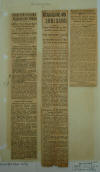
|
15. January 7 & 14.
Press clippings: "Threatens To Burn Nicaraguan
Towns — Sandino Writes Mexican
Agent — He Must Destroy Country
To Save It From Us" (Jan 7),
"Nicaraguans Win 3 Rebel
Clashes" (Jan 7), and "Nicaragua
President Lauds Marines For Aid"
(Jan 13), New York Times.
"THREATENS TO BURN
NICARAGUAN TOWNS ¶ Sandino
Writes Mexican Agent He Must
Destroy Country to Save It From
Us. ¶ GUARD IN FOUR NEW FIGHTS ¶
Representative Cochran, Urging
Better Pensions, Says 200
Marines Have Been Killed
Altogether. ¶ MEXICO
CITY, Jan.6
(AP).—Representatives of Agusto
Sandino, Nicaraguan insurgent
chief, made public today a
letter from Sandino, said to
have been written at his
headquarters, El Chipoton, and
smuggled into Mexico by way of
San Salvador, in which he says:
¶ In order to save Nicaragua it
is necessary to destroy it. ¶ We
have sent final orders to burn
the cities of our republic,
because if the invading
assassin, destroying our
national autonomy, is going to
rob us of our homeland, at least
he will have to rebuild it over
the ashes of our bodies. ¶ Good
wishes to the people that regard
without fear our destruction.
Fatherland and liberty. ¶ A. C.
SANDINO. ¶ José Constantino
Gonzales, who calls himself
secretary in Mexico to Sandino,
also made public a telegram
which he said had been sent to
Senators King and Borah in
Washington. The telegram said: ¶
“Withdrawal of marines should be
last act of the
twenty-years-long drama of
intervention of Nicaragua. Latin
America repudiates American
military intervention. I assure
you that Sandino would lay down
arms and our country would be
completely and automatically
pacified if the marines are
withdrawn. Sandino and his
followers are only defending
Nicaragua’s autonomy. We do not
demand the withdrawal of the
marines as a favor but as an act
of undeniable and impending
justice.” ¶ Native
Troops in Clashes. ¶
MANAGUA, Jan. 6 (AP).—Patrols of
the Nicaraguan National Guard,
commanded by officers detached
from the United States marines,
have fought several engagements
with insurgent forces in the
densely wooded country between
Totogalpa and Ocotal within the
last few days, it was reported
here today. ¶ The engagements
were in the same district where
eight marines were killed and
four wounded in two battles last
week. The insurgents were all
declared to be followers of
Sandino. ¶ One of the patrols,
under Lieutenant J. MacDonald,
battled with a group of 100
insurgents near Licory, killing
three. One member of the patrol
was slightly wounded. ¶
Yesterday evening another patrol
fought a running engagement with
an insurgent group near Chipote.
One of the insurgents was
killed, but there were no
casualties among the guardsmen.
¶ Captain R. E. Forsyth,
commanding a patrol from Ocotal,
reported the destruction of two
insurgent camps. Thirty-six
cadets of the National Military
Academy left here yesterday by
airplane under the command of
Captain Edward Trumbull for
service in the northern area. ¶
James Robert Earnhardt of
Concord, N. C., who was wounded
in a battle on Jan. 3, was still
in a serious condition today,
and physicians doubted if he
would recover. Mack Hutcherson
of Shreveport, La., Frank Austin
Jackson of Lawrenceville, Ga.,
and David M. Kirkendall of
Chicago, who were also wounded,
are expected to recover. ¶
NICARAGUANS WIN 3 REBEL
CLASHES ¶ Patrols Commanded by
Marines Rout Sandino Bands ¶
FOUR INSURGENTS KILLED ¶ One
Wounded American May Die; Three
Others Recovering ¶
MANAGUA, Nicaragua, Jan. 6 (A.
P.)—Patrols of the Nicaraguan
National Guard, commanded by
officers detached from the
United States marines, have
fought several engagements with
insurgent forces in the densely
wooded country between Totagalpa
and Ocotal within the last few
days, it was announced here
today. ¶ The engagements were in
the same district where eight
American marines were killed and
four wounded in two battles last
week. The insurgents were all
declared to be followers of
Augustino Sandino. ¶ One of the
patrols, under Lieut. J.
MacDonald, battled a group of
100 insurgents near Licoroy,
killing three. One member of the
patrol was slightly wounded. ¶
Yesterday evening another patrol
fought a running engagement with
an insurgent group near Chipote.
One insurgent was killed, but
there were no casualties among
the guardsmen. ¶ Capt. R. E.
Forsyth, commanding a patrol
from Ocotal, reported the
destruction of two insurgent
camps. Thirty-six cadets of the
National Military Academy left
here yetserday [yesterday] by
airplane under the command of
Capt. Edward Trumbull for
service in the northern area. ¶
James Robert Earnhardt of
Concord, N. C., who was wounded
in a battle Jan. 3 was still in
a serious condition today and
physicians doubted he will
recover. Mack Hutcherson of
Shreveport, La., Frank Austin
Jackson of Lawrenceville, Ga.,
and David M. Kirkendall of
Chicago, who were also wounded,
are expected to recover. ¶
Destruction of All Nicaragua,
Vowed by Sandino ¶ MEXICO CITY,
Jan. 6 (A. P.)—Representatives
of Augustino Sandino, Nicaraguan
insurgent chief, today made
public a letter from Sandino,
said to have been written at his
headquarters, El Chipoton, and
smuggled into Mexico by way of
San Salvador, in which he says:
¶ “In order to save Nicaragua it
is necessary to destroy it. ¶
“We have sent final orders to
burn the cities of our republic,
because if the invading assasin
[assassin], destroying our
national autonomy, is going to
rob us of our homeland, at least
he will have to rebuild it over
the ashes of our bodies. ¶ “Good
wishes to the pople [people]
that regard without fear our
destruction. Fatherland and
liberty. A. C. CANDINO
[SANDINO].” ¶ Jose Constantino
Gonzalez, who calls himself
secretary in Mexico to Sandino,
also made public a telegram
which he said had been sent to
Senators King and Borah in
Washington. The telegram said: ¶
“Withdrawal of marines should be
the last act of the twenty years
long drama of intervention in
Nicaragua. Latin America
repudiates American military
intervention. I assure you that
Sandino would lay down arms and
our country would be completely
and automatically pacified if
the marines are withdrawn.
Sandino and his followers are
only defending Nicaragua’s
autonomy. We do not demand the
withdrawal of the marines as a
favor but as an act of
undeniable and impending
justice.” ¶ NICARAGUA
PRESIDENT LAUDS MARINES FOR AID
¶ But Moncada Realizes Nation’s
Duty to End Banditry Without
Additional Help From Us.
¶ By Cable to the Editor of THE
NEW YORK TIMES. ¶ MANAGUA,
Nicaragua, Jan. 13.—I am
offering no objection to the
marines remaining in Nicaragua,
because they have worked
sincerely and arduously to
secure liberty and order within
my country. For this the
Nicaraguans must be grateful.
But I feel that we, the
Nicaraguans, are obligated to
wage war against the bandits. ¶
In regard to the necessity for
more marine officers and medical
officers, I do not desire to see
more American marines killed and
to witness the sending of their
bodies to the United States.
Ambuscades similar to the one at
Las Cruces, where the marines
were recently killed, results in
loss of prestige for the United
States and even more for
Nicaragua. ¶ We, the
Nicaraguans, are obliged to
restore peace to our country
[unreadable] stanch the blood of
our wounded. The American
marines will be able to guard
the cities of the north and
probably some other towns of the
interior, protecting the foreign
and national interests that are
in such cities while the guard
is suppressing banditry. ¶ I
have experienced and feel a
profound sadness for the marines
who perished in the last
ambuscade of the Sandinistas.
They fell in a land with which
they were unfamiliar. Indeed,
they were actually assassinated
and did not succumb in a real
and honest fight. ¶ We have
pledged our determination and
our heart blood to avoid similar
fatalities, and we desire a
change of tactical policy that
will result in meeting the
bandits in actual mountain
warfare and opposing them with
the same methods as they
themselves use. ¶ J. M. MONCADA,
¶ President of Nicaragua."
|
|
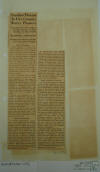
|
16. ca. January 7, 1931.
"Sandino Threats To Fire Country
Worry Planters," unidentified
newspaper.
"Sandino Threats To Fire Country
Worry Planters ¶ Nicaraguans
Fear Incendiary Attempt Because
of Dry Condition of Their Fields
¶ Bandit Hides in Mountains ¶
Headquarters Believed To Be in
an Unexplored Region ¶
By E. Bruguiere ¶ General
Augustine C. Sandino, Nicaraguan
bandit leader, made public this
month another of his now
frequent threats against the
United States Marines. The
letter, given to the press by
Jose Gonzales, secretary in
Mexico to Sandino, stated that
in order to save Nicaragua he,
Sandino, must destroy the
country by fire and that this
would be done by burning its
towns and cities. Whether the
threat is to be taken seriously
is problematic, though the
recent killing of eight United
States Marines would appear to
give it weight. ¶ This is not
the first time this threat has
been made. On March 18, 1929,
there appeared in a daily paper
in Tegucigalpa, Honduras, the
following signed statement by
Sandino: “We are preparing a
sort of incendiary bomb composed
of ingredients of such
naturalness that it explodes
after it has been raining
fifteen minutes; and with them
we will burn the houses in the
towns where are our enemies
(Marines).” ¶ Whether the
description of the “bomb” is
intentionally vague or the
threat is a hollow one, it is
difficult to say. In Nicaragua,
particularly on the west coast
and in the north, where Sandino
operates, practically all
buildings are of tile-roofed
adobe or mud and are almost
fireproof. ¶ However, the second
letter created considerable
anxiety among owners of grain
fields and pasture lands. The
fields were then comparatively
dry and the fear was that these
bombs would be used to ignite
them. ¶ Bandits Well
Equipped ¶ As Guardia
headquarters in Nicaragua have
reported that the bandits now in
the field appear to be well
equipped and have ample
ammunition it is not amiss to
suppose that Sandino plans a
concentrated movement in the
near future. Nor is there room
for doubt that he is receiving
outside aid. It is popularly
believed in Nicaragua that this
aid is derived in Mexico, where
Sandino spends most of his time
when not in Nicaragua or near
its border in Honduras. The fact
that he is considered something
of a hero and patriot in Mexico
and that Nicaragua and Mexico
have for many years evinced an
antagonistic attitude for each
other, lend credence to the
belief. ¶ All correspondence
from Sandino since 1929 has been
dated from El Chipoton,
Nicaragua, which is given as the
location of the Sandinistan
headquarters. His former
headquarters was at El Chipote,
a name for which he himself gave
to a large mountain adjoining
the Division de Aguas range.
While El Chipote was claimed by
Sandino to be impregnable, its
greatest impregnability lay in
the fact that no one knew where
it was. Not until January, 1928,
was it discovered to be midway
as a crow flies between the
marine garrisons at Quilali and
San Albino. After that, with the
aid of bombing planes, little
time was lost in driving the
bandit forces from their
stronghold. ¶ Region
Guarded by Mountains ¶
Like El Chipote, Chipoton is
believed to be his own
designation for one of the
mountains in the northern
section of the Department of
Jinotega, somewhere in the
triangle formed by the Wamblan
and Tuna Vaki Rivers. That is
completely unknown and unmapped
territory inhabited principally
by Carib and Mosquito Indians.
Because of towering mountains
and forested valleys and the
absence of any sort of trails,
it is the most inaccessible part
of the country. Because the
Guardia lacks sufficient funds
and personnel no expedition has
explored this area. At present
all available men are being used
for police routine in the cities
and to hold the more important
towns and highways against
bandit marauders. ¶ Operating in
the northern area at present are
the bands of Pedro Altimirano
(“Pedron”), of about 150 men;
Miguel Ortez, of about 100; the
sixty under Salgado, and a small
group, not very active of late,
headed by Blandon. While there
are a great many smaller groups,
they are considered relatively
unimportant. ¶ Although Sandino
claims that all of the bands
operate under his orders, it has
been reported that they consider
themselves independent.
Certainly their movements during
the last year have had little
appearance of unified action.
Nevertheless, in the wake of
their marches there has recently
been a great amount of verbal
and printed propaganda found
showing that Sandino is making a
strong attempt to reorganize for
another drive."
|
|
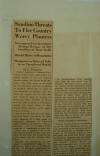
|
17. ca. January 7, 1931.
"Sandino Threats To Fire Country
Worry Planters," unidentified
newspaper.
Close-up of above.
|
|
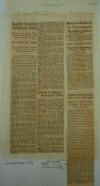
|
18. February 2 & 7,
"Marines to Reduce Nicaraguan
Duties," "Marines to Garrison
Nicaraguan Towns," and "Banditry
in Nicaragua Said To Be
Increasing," New York Times,
and "Marines Rushed As
Nicaraguan Bandits Gather,"
New York Tribune.
"MARINES TO REDUCE
NICARAGUAN DUTIES ¶ Stimson,
Framing New Policy, Will Turn
Over Defense of the Country to
Native Troops. ¶ OUR FORCES WILL
REMAIN ¶ They Will Be Stationed
at Strategic Points for “Moral
Effect”—Secretary to Inform
Senate. ¶ Special to
The New York Times. ¶
WASHINGTON, Feb. 6.—What is
called a new policy in Nicaragua
has been worked out by Secretary
Stimson and will soon be made
public, the Secretary announced
today, after concluding
conferences with Matthew E.
Hanna, American Minister to
Nicaragua, and Brig. Gen.
Douglas C. McDougal, commander
of the National Guard in that
country. ¶ The policy is
expected to provide for the
Nicaraguan National Guard’s
taking over the police powers
throughout the republic, a
function it exercises at present
only in the bandit country of
Northern Nicaragua, with
American Marines retained as
supporting forces, in relative
inactivity. ¶ Secretary Stimson
will probably communicate the
details of the new arrangement
to the Foreign Relations
Committee, when, in response to
a resolution introduced by
Senator Johnson of California
and adopted by the Senate, he
will submit to the committee
documents bearing upon the
status of the Marines in
Nicaragua. Mr. Stimson will be
prepared at that time to discuss
American policy in Nicaragua in
explanation of the various
points contained in the
documents. ¶ There is no
indication that the Marine force
will be either increased or
decreased for the present, the
plans calling for it to be
distributed at strategic points
such as Managua, Ocotal, Leon,
Chinendega [Chinandega],
Matagalpa and Bluefields, where
its presence will be primarily
for moral effect. In event of an
emergency, however, the Marines
would be used in active
operations. ¶ This situation is
expected to continue at least
until a definite decision is
reached concering [concerning]
the building of the projected
Nicaraguan canal, but that
question was said today not to
enter directlyl [directly] in to
the new policy. ¶ Other reports
that a big drive was being
planned against Sandino bandits
in Northern Nicaragua were
denied. Marine officers pointed
out that such an operation was
impossible in the jungle
country. ¶ At present there are
178 marine officers and
twenty-nine naval medical
officers with the National Guard
who will be retained for the
purposes of assisting in the
training and the development of
that organization. In addition
there are in Nicaragua 136
officers and 1,410 enlisted men
of the marines. This compares
with the high point of 276
officers and 5,106 enlisted
marines in July, 1928. ¶ The
National Guard, in addition to
the 207 marine and naval
officers, consists of 1,865
Nicaraguans. The aim of the
United States when it encouraged
the development of this force
was for it to reach a strength
of 2,500 men. ¶ The Nicaraguan
Congress, however, inserted in
the Tipitata [Tipitapa]
agreement, which was concluded
by Mr. Stimson, as special
emissary of President Coolidge,
in 1928, as a means for bringing
the revolution to an end, a
provision that the guard should
not exceed ninety-three
commissioned officers and 1,134
enlisted men. The cost per year
was limited to $698,132. ¶ The
United States never accepted
this arrangement, although it is
contained in the agreement, and
the limits have always been
exceeded, the cost in 1928-29
being more than $1,000,000. ¶ It
s [It is] the element of cost
which has prevented the guard
being developed more rapidly,
inasmuch as Nicaragua has been
affected by the world-wide
economic depression. ¶ As a
result of Mr. Stimson’s recent
conferences, Nicaragua is to
obtain a credit of approximately
$1,000,000 in New York, which
will be used for the guard and
for the construction of public
works. ¶ The latter, it is
estimated, will give employment
to natives who otherwise might
turn to banditry for a
livelihood, while President
Moncada has always believed that
his country could be developed
only through the building of
adequate public roads and
railroads. ¶ General McDougal is
not to return to Nicaragua,
having completed his tour of
duty. He will probably be
assigned to marine headquarters
here, while the guard will be
commanded by Lieut. Col. Calvin
B. Matthews, who at present is
in acting command of that force.
The marines in Nicaragua are
commanded by Colonel Frederick
L. Bradman. ¶ A joint funeral
service was held at Arlington
National Cemetery today for
Privates Lambert Bush of
Minette, Ala., and Joseph A.
Harbaugh of Washington, Pa., who
were killed when a marine
detachment was ambushed by
bandits on Dec. 31, 1930, near
Achuapa, Nicaragua. ¶ The bodies
of the six other marines who
were killed in the same action
have been sent to their homes
for burial. ¶ MARINES TO
GARRISON NICARAGUAN TOWNS
¶ By Tropical Radio to THE NEW
YORK TIMES. ¶ MANAGUA,
Nicaragua, Feb. 6.—United States
Marines, in accordance with the
policy of supporting the
Nicaraguan National Guard, will
garrison today the towns of
Pueblo Nuevo and Somoto in the
Department of Nuevo Segovia,
where a strong bandit attack is
expected at any moment. ¶ As
peaceful conditions continue in
the northern provinces, National
Guard officials regard the
situation as the calm before a
storm. Reports through official
channels late last night stated
that a large bandit
concentration was taking place
between Somoto and Pueblo Nuevo,
including five groups under
command of the leaders Ortez,
Diez, Salgado, Cerda and Alfaro.
The reports requested marine aid
in these two towns. ¶ Early this
morning two patrols of marines
were despatched from Ocotal, and
they will garrison the two
towns, thus relieving and
supporting the guard forces, who
can now patrol the surrounding
territory, the National Guard
garrison being insufficient for
both garrisoning and patrolling.
¶ The reports stated the bandit
groups were reported as having
received a fresh supply of
ammunition and materials and
that bandit recruiting was
progressing rapidly. It was
thought the bandits would
attempt to raid the towns during
the next forty-eight hours. ¶ A
Marine Corps aviation unit is
prepared to render assistance if
necessary. ¶ National Guard
Headquarters reported that
Lieutenant Clark, with […] ¶
Marines Rushed As
Nicaraguan Bandits Gather ¶
Outlaw Attack Expected in 48
Hours; National Guard in
Skirmish, One Rebel Slain ¶ Cuba
to Readmit Editor ¶ Wilford May
Publish Havana ‘Amerian,’ Order
Says ¶ By The United
Press ¶ MANAGUA, Nicaragua, Feb.
6.—Two patrols of United States
marines were rushed from Octobal
[Ocotal?] to Pueblo Nuevo and
Somoto today, where National
Guard officers expect a strong
bandit attack within forty-eight
hours. A large bandit
concentration is taking place
between Somoto and Pueblo Nuevo
under the direction of outlaw
chiefs Ortez, Diaz, Salgado,
Cerda and Alfaro, according to
official reports. The reports
stated that the bandits had
received a fresh supply of
ammunition and were rapidly
recruiting followers. ¶ The two
marine corps patrols will
relieve the Nicaraguan National
Guardsmen stationed at Pueblo
Nuevo and Somoto, the latter
taking the field against the
bandits. Lieutenant Clark,
comanding [commanding] a
National Guard patrol at
Condega, reported a skirmish at
2 o’clock this morning with an
unknown number of bandits headed
by a Sandino chieftain, Pedro
Blandon, near San Geronimo. At
least one bandit was killed and
another wounded, according to
reports brought here by a natice
[native] runner. ¶
BANDITRY IN NICARAGUA SAID TO BE
INCREASING ¶ Outlaws Have
Mysterious Source of
Supplies—Washington Aid Seen as
Necessary. ¶ Special
Correspondence, THE NEW YORK
TIMES. ¶ PANAMA CITY, Feb.
1.—Some of the Americans
resident in Nicaragua and
familiar with present conditions
are not optimistic of the
possibility of early withdrawal
of United States marines from
that country. It is asserted
that the bandit situation is as
bad at present and possibly
worse than it was three years
ago when the marines entered the
country to restore peace. ¶ One
of the mysteries of the
situation is the source of
supply of arms and munitions for
the bandits, many of whom are
well armed with modern rifles
and machine guns. It does not
seem possible for them to live
off the country in which they
are operating and there must be
a source of commissary supplies
as well as of munitions. It
seems to be apparent that many
of the residents of the
districts in which the bandits
operate are either in sympathy
with them or are thoroughly
cowed, and it is charged that
when bandits are caught the
civil courts sometimes turn them
loose in a short time. ¶ On the
other hand the National Guard
has a difficult task to manage
on the small pay and allowance
for rations received, especially
in sections where crops have
been a failure or where
cultivation is restricted due to
the presence of bandits.
Recently the personnel of the
guard was reduced and at the
same time their ration allowance
was cut from 25 to 20 cents a
day. Their allowance for
clothing is only three-quarters
of a cent a day and their pay is
only $12 a month. This
apparently does not make service
in the guard very attractive and
does not hold the best class of
guardsmen. ¶ It is said that it
will take years to build up the
National Guard, even if funds
are available, and doubt is
expressed if they will ever be
able to clean up the country
without the support of
Washington and the leadership of
American officers."
|
|
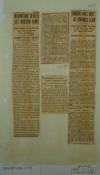
|
19.
February 12-17, 1931.
Press clippings: "Nicaraguan Rebels Get Modern
Arms" (Feb 12), and "Sandino
Will Quit As Marines Leave" (Feb
15), The Washington Post,
and "Nicaraguan Insurgents
Defeat National Guard" (Feb 17),
Baltimore Sun.
"NICARAGUAN REBELS GET
MODERN ARMS ¶ Good Supply of
Ammunition Also Causes Concern
to U. S. Officials. ¶ SOURCE IS
NOT KNOWN ¶ (Associated
Press.) ¶ Already concerned over
the resumption of insurgent
activities in Nicaragua,
officials here and in the
Latin-American republic have
been presented with another
disturbing element by an
increase in the outlaws’
supplies of arms and ammunition.
¶ Officially described as “one
of the most disturbing aspects
of the present situation” in
Nicaragua, the appearance of
modern automatic weapons and an
apparent good supply of
ammunition in the hands of the
insurgents. This development is
declared to be a complete
mystery to American authorities.
¶ The source of the increase,
they said, was “not definitely
known.” ¶ The supplies include
machine guns, as indicated by
recent encounters with United
States Marines stationed in the
republic. This was declared by
officials to be in distinct
contrast with their previous
situation when they were
understood to be short of
weapons and ammunition. ¶
Secretary Stimson appeared last
night to be the single high
Government official to whom the
others looked for any comments
on the Nicaraguan situation. ¶
The Secretary has indicated he
expected to make a statement on
American military policy with
regard to Nicaragua if called
upon for testimony by the Senate
foreign relations committee. ¶
He said yesterday, however, he
had not been asked to appear. In
the event he is not summoned,
Stimson said he would forward to
the Senate the State Department
documents on the relation of the
United States with Nicaragua
asked for in a resolution by
Senator Johnson (Republican),
California. ¶ A new element in
relations between the two
nations, in the form of the
survey—now being made—for the
proposed Atlantic-to-Pacific
canal across Nicaragua, has
resulted in considerable
speculation in unofficial
circles as to the nature of the
statement on military policy
which the Secretary contemplated
before the Senate committee. ¶
The general belief was that it
would include some plan for the
final extermination of the
insurgent forces. Secretary
Hurley, whose War Department
Engineering Corps is making the
canal survey, has made known
that the engineers have not been
troubled by them. ¶ The
insurgent menace is considered
by officials here to be an
important factor for
consideration in the event work
on a canal should eventually
begin. It was believed any plan
advanced for their extermination
would contemplate a campaign by
the Nicaraguan National Guard
and not by Marines, who assist
in training and officering the
local forces. ¶ As a former
Secretary of War, Stimson has
been able to consider the
Nicaraguan situation from more
of a military viewpoint than
have his recent predecessors. ¶
Although considered an authority
on Nicaraguan and colonial
matters himself, the Secretary
recently summoned to Washington
the two Government officers more
intimately acquainted with the
situation than any others,
American Minister Matthew E.
Hanna at Manacua [Managua] and
Brig. Gen. Douglas McDougal, who
has been in charge of the Marine
contingent in the republic. ¶
The Secretary sought extensive
information from these officers
on all phases of conditions in
the republic with a view to
meeting any situation which
might arise. ¶
Nicaraguan Insurgents Defeat
National Guard ¶ Occupy Town And
Radio Station. Constabulary
Sends Appeal For Help ¶
Colon, Canal Zone, Feb. 16
(AP)—Reports were heard today
that Nicaraguan insurgents had
overpowered a detachment of
Nicaraguan National Guardsmen in
the town of Gracias a Dios and
captured the place, seizing its
radio station. ¶ The United
Fruit steamer Nicaro, cruising
in Nicaraguan waters, was
reported to have received an
urgent message from Captain
Stent, commanding the guardsmen,
who asked that soldiers be sent
to recapture the place. ¶
Gracias a Dios is on the extreme
northeastern point of Nicaragua.
¶ SANDINO WILL QUIT AS
MARINES LEAVE ¶ Nicaraguan Rebel
Promises to Stop Fire Only When
All Troops Withdraw. ¶ URGES
EARLY DEPARTURE ¶
Mexico City, Feb. 14
(A.P.).—Gen. Augustino Sandino’s
Mexico City representative
promised today the noted
Nicaraguan insurgent would lay
down his arms as soon as the
last United States Marine was
out of his country, but until
then would continue fighting. ¶
At the same time the
representative, Dr. Pedro Jose
Zepeda, sent a message on behalf
of Sandino to American
Ambassador J. Reuben Clark,
urging that the latter ask his
Government to withdraw the
Marines immediately. Zepeda
promised the Sandinistas would
cease fighting at the same time.
¶ Zepeda also suggested that a
commission of Americans and
Nicaraguans, with a neutral
umpire, be appointed to discuss
the revision of existing
treaties, which he called
“incompatible with Nicaragua’s
honor and decorum.” ¶
Fear Is Expressed. ¶
Managua, Nicaragua, Feb. 14
(A.P.). Prominent figures who
were interviewed tonight on the
plan to withdraw United States
marines from Nicaragua expressed
fear that insurgent activities
would flare anew in the north if
the retirement were made too
speedily. ¶ “Retirement of the
United States marines,” said
Enoc Aguado, vice president of
Nicaragua, “whose permanence
here has been a factor of order
and tranquility, can have fatal
consequences if it is not done
methodically and gradually. ¶
“The patriotism of political
parties will be placed to a test
and their future acts will
demonstrate whether the presence
of United States marines is
indispensable for the
maintenance of order. The United
States, by withdrawing the
marines, clearly shows its
intentions for Nicaragua have
been only to cooperate and
sustain peace, without which
progress is not possible.” ¶
Former President Adolfo Diaz,
now head of the Conservative
party, commented as follows: ¶
American Is Hopeful.
¶ “Under no
consideration should the Marines
be retired, bit if this is being
planned it should not be done
until the northern section is
completely pacified—and then
only with gradual slowness,
leaving an American legation
guard.” ¶ Irving A. Lindberg,
American collector of Nicaraguan
customs, said he hoped the plan
would arrange for gradual
withdrawing in keeping with the
strengthening of the National
Guard so that the government
might be able to cope with the
situation in the northern
sector. ¶ Outside of publishing
the statement last night of
President Jose Moncada, which
said the withdrawal plan was “an
eloquent demonstration that the
United States came to Nicaragua
only to help it solve grave
problems,” the local newspapers
have published nothing else
regarding the Marine plan."
|
|
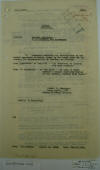
|
20.
February 8 & 15, 1931.
G-2 Translations of "All Educators Of America Are
With Sandino," Excelsior,
Feb 8, and "As Long As There
Remains A Single American Marine
In His Country, Sandino Will
Fight," El Universal,
Feb. 15,
Capt. Robert E. Cummings, Acting
Military Attaché, Mexico City,
p. 1.
"G-2 Report ¶ 3850: ¶ MEXICO ¶
POLITICAL ¶ SUBJECT Foreign
Relations: ¶ C. A. SANDINO, and
Nicaragua. ¶ 1. Forwarded
herewith are translations of two
recent newspaper articles, given
to the local press by Dr.
Zepeda, the representative of
Sandino, as follows: ¶ From
“Excelsior” of Feb. 8/31 – “All
Educators of America are with
Sandino.” ¶ From “El Universal”
– of Feb. 16/31 – “As Long as
there remains a single American
Marine in his country, Sandino
will fight.” ¶ Robert E.
Cummings, ¶ Capt., Infty., DOL ¶
Acting Military Attaché. ¶
Source: As indicated. ¶ C/p ¶
From: M.A.Mexico. ¶ Report No.
3242. ¶ Date: Feb. 17, 1931."
|
|
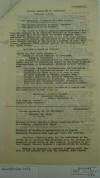
|
21.
February 8 & 15, 1931.
G-2 Translations of "All Educators Of America Are
With Sandino," Excelsior,
Feb 8, and "As Long As There
Remains A Single American Marine
In His Country, Sandino Will
Fight," El Universal,
Feb. 15,
Capt. Robert E. Cummings, Acting
Military Attaché, Mexico City,
p. 2.
"(Translation.) ¶ Article
appearing in “EXCELSIOR” ¶
February 8, 1931. ¶ All
Educators of America are with
Sandino. ¶ The Spanish-American
Students’ Congress addresses
José María Moncada. ¶
Dr. Pedro J. Zepeda, general
representative of the “Ejercito
Defensor de la Soberanía
Nacional de Nicaragua” has sent
us copy of a letter which the
Primer Congreso Iberoamericano
de Estudiantes addressed to Sr.
José María Moncada who
arbitrarily directs the
destinies of the sister
Republic, where General Sandino
at the head of a handful of
brave followers, maintains armed
protest against the intervention
of the United States. ¶ Said
letter reads as follows: ¶
“Señor don José María Moncada.-
¶ President of the Republic of
Nicaragua, ¶ Managua, Nicaragua.
¶ I take pleasure in addressing
you in order to transcribe,
below, one of the resolutions
passed by the first Congreso
Iberoamericano de Estudiantes,
relating to your Government. ¶
‘The First Congreso
Iberoamericano de Estudiantes
declares its adhesion
(adherence) to the
anti-imperialistic cause which,
with arms in hand, is being
defended by General Augusto
César Sandino, chief of the
Ejercito Defensor de la
Soberanía Nacional de Nicaragua.
IT LIKEWISE EXPRESSES ITS
REPUGNANCE TOWARD GOVERNORS WHO,
LIKE JOSÉ MARÍA MONCADA, HAVE
SOLD THEIR COUNTRY.’ ¶ Upon
transmitting to you this
resolution I comply with the
instruction of said Congress. ¶
Mexico, D.F., January 31, 1931.
¶ Secretary General: ¶ Efrain
Escamilla M. ¶ With copy to
General Augusto César Sandino.”
¶ (Translation) ¶ Article
appearing in “EL UNIVERSAL” ¶
February 15, 1931. ¶ As
long as there remains a single
American Marine in his country,
Sandino will fight. ¶ Statement
of Sandino’s Representative in
Mexico. ¶ Secretary Stimson’s
Plan does not Solve the
Conflict. ¶ Secretary
Stimson’s plan for the
withdrawal of the United States
Marines from Nicaragua will not
produce the immediate
pacification of that country,
according to Dr. José Zepeda,
General Sandino’s representative
in Mexico. ¶ Sandino is disposed
to continue fighting until the
last of the marines has left the
country, says Zepeda; . . . "
|
|
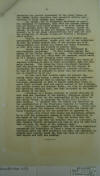
|
22.
February 8 & 15, 1931.
G-2 Translations of "All Educators Of America Are
With Sandino," Excelsior,
Feb 8, and "As Long As There
Remains A Single American Marine
In His Country, Sandino Will
Fight," El Universal,
Feb. 15,
Capt. Robert E. Cummings, Acting
Military Attaché, Mexico City,
p. 3.
" . . . therefore the gradual
withdrawal of the armed forces
of the United States signifies
that guerrilla warfare will
continue at least another year
longer. ¶ Dr. Zepeda, who is
frequently mentioned as possible
President of Nicaragua, said
that the Moncada Government in
Managua will have nothing to do
with Sandino if all the marines
leave the country. Sandino,
Zepeda declares, is willing to
lend his support to the Moncada
Government, or to any other
administration that does not
have the protection of foreign
troops, and follows a
nationalistic policy. ¶ Denying
the popular supposition that
Sandino has presidential
aspirations, Zepeda said that he
was authorized to make the
solemn promise that if the
marines are withdrawn, Sandino
will disarm his forces and leave
Nicaragua, or will live there
but retired to private life. ¶
Zepeda also denied that Sandino
is influenced by anti-American
prejudices. “We have nothing
against the people of the United
States”, he said. “In fighting
against the marines we are only
doing what the American people
would do if a foreign power
occupied their country.” ¶ He
added that the Sandinistas
respected the lives of American
citizens, as well as their
properties, when the campaign
started. “But later, the State
Department declared that the
marines had invaded Nicaragua
for the purpose of protecting
the lives and properties of
American citizens, in view of
which we proposed to prove that
the marines were not in
condition to do so.” ¶ He also
said that Sandino could not
prevent the United States from
taking a strip of Nicaragua to
construct a canal, but declared
that in exchange for those lands
Nicaragua considered it just to
demand sufficient money to cover
their national debt and regain
control of the railways, the
customs houses and national
banks, and also to reconstruct
the territory which, he said,
had been destroyed by the
bombing planes of the navy. ¶
According to a treaty accepted
by Adolfo Díaz, who at that time
was President of the country,
Nicaragua agreed to cede a strip
of land for the construction of
the canal to the United States,
in exchange for $3,000,000.
(U.S. Cy.), said Zepeda,- “I
remember that the treaty was
submitted to the consideration
of the Nicaraguan Congress in
English, and no one in the
Congress understood that
language. Guards were stationed
around the Congress building
while the treaty was being
discussed, and no one was
permitted to approach it.” ¶
Zepeda also stated that Mexico
had absolutely nothing to do
with the mysterious source of
supply of munitions in the hands
of the Sandinistas. “They are
seized from the American marines
and from the National Guard of
Nicaragua, so when Sandino
finally surrenders his arms it
will be seen that they all bear
the stamp of the American Army.”
¶ Finally, Dr. Zepeda suggested
that the State Department
reconsider its resolution to
leave a force of marines in
Nicaragua until the 1932
elections are held, and repeated
his promise that Sandino would
lay down his arms as soon as the
last marine had left the
country."
|
|
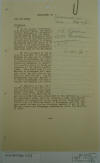
|
23. February 13, 1931.
Press Release, US State Dept, p.
1.
[Handwritten note paper-clipped
to translation: "Marines in Nic
- Feb 14 / 31. 143 Officers,
1274 men = 1417" See
document no. 24, below.]
|
|
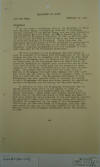
|
24. February 13, 1931.
Press Release, US State Dept, p.
2.
"DEPARTMENT OF STATE ¶ FOR THE
PRESS ¶ FEBRUARY 13, 1931 ¶
Nicaragua ¶ At the recent
conferences held by the
Secretary of State with Minister
Hanna, the American Minister to
Nicaragua, Colonel McDougal of
the Marine Corps, who has been
commanding the Nicaraguan
National Guard, and Major
General McCoy, who supervised
the Nicaraguan elections in
1928, a definite plan for the
future has been arrived at which
has been accepted by President
Moncada of Nicaragua. Under this
plan the Nicaraguan National
Guard is to be increased by
approximately 500 men to be used
exclusively in the bandit area,
and the necessary financial
arrangements for this increase
of force have been made by the
Nicaraguan Government. ¶ By this
increase of the Nicaraguan
National Guard it will be
possible to withdraw from
Nicaragua all of the Marine
Brigade who are now on combatant
duty probably by June next,
leaving in Nicaragua only the
Marines who are still engaged in
instruction in the Nicaraguan
National Guard and an
instruction battalion to support
such instruction and an aviation
section which is being used for
the present to carry supplies in
the bandit provinces which are
entirely without roads. This
means that by June next the
total force of Marines in
Nicaragua will have been reduced
from over 5,000 men, which was
the size of the force in
January, 1929, to probably not
over 500 men. The Nicaraguan
Government by this arrangement
has also secured funds to
increase the school in which
Nicaraguan officers are being
trained to completely replace
the Marines now officering the
National Guard. ¶ In addition to
this the Nicaraguan Government
has obtained further funds which
it has agreed to spend in the
construction of long needed
roads and trails in the bandit
provinces. These roads will
greatly facilitate the future
work of its National Guard in
that area and make it much more
effective and protective to the
surrounding country. The
Department feels that the
foregoing steps will greatly
expedite the completion of the
task of this Government in
instructing the National Guard
of Nicaragua, and that they have
paved the way for the ultimate
removal of all of the Marines
forces from Nicaragua
immediately after the election
of 1932."
|
|
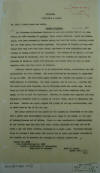
|
25. February 6, 1931.
G-2 Report on Bandit Situation
in Nicaragua, Lt. Col. Fred T.
Cruse, Military Attaché, San
José.
"NICARAGUA ¶ POPULATION & SOCIAL
¶ No. 2700 – Public Order and
Safety. ¶ Bandit Situation ¶ The
situation in Northern Nicaragua
is now more serious than it was
even during the 1928 campaign of
Sandino. Three towns, Matiguas,
Somoto and Palacaguina, have
been attacked by bandits during
the last few months, something
which did not occur during the
Sandino uprising. The groups of
bandits are very much larger
than they have ever been before,
and there is some indication
that the Guardia is losing
control of the situation. The
Government of Honduras has
entirely failed to cooperate,
with the result that the bandits
can organize unmolested in
Honduras, cross into Nicaragua
and remain there as long as
their supplies last, and then
return to Honduras. ¶ Although
Sandino appears to be an
unimportant factor, nevertheless
his old organization has been
revived. The route followed by
messengers is again what it was
in 1928. The last known agent
between the outside and Sandino
is again José Idiaquez in
Cifuentes. Mr. Henry Lepidus,
who is here as a reporter for
the Saint Louis Post Dispatch,
was in Cifuentes about two
months ago. He informs me that
he talked to Idiaquez, and that
the latter admitted being the
agent, so far as mail was
concerned. However, he stated
that supplies and arms obtained
in Honduras went to Sandino by
another route, which he
(Idiaquez) did not know. Sandino
has again adopted the policy of
one way communication, and is
never seen by any of his own
men. ¶ The large increase in the
number of the bandits is
attributed to the fact that a
great many discontented Liberals
have taken to the hills, in the
hope of driving Moncada out of
office. There is also
considerable dissatisfaction in
the Guardia over the fact that
their ration allowance has been
out to 20 cents a day and their
clothing allowance to 4 cents a
day. President Moncada hopes to
arrange a loan which will enable
him to again pay proper salaries
to the Guardia and to increase
its strength by several hundred
men. ¶ Report No. 1083 ¶ San
José--February 6, 1931 ¶ Source
– Evaluation of information from
various sources. ¶ Fred T.
Cruse, ¶ Lieut. Col., F.A. ¶
M.A."
|
|
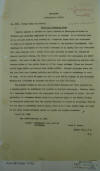
|
26.
February 6, 1931. G-2
Report on Plans For Volunteeer
Force in Nicaragua, Lt. Col.
Fred T. Cruse, Military Attaché,
San José.
xNICARAGUA
¶ POPULATION & SOCIAL ¶ No. 2700
– Public Order and Safety. ¶
Plans for Volunteer Force ¶
General Augusto J. Caldera has
been relieved as Nicaraguan
Minister to Honduras and
appointed Comandante of the Port
of Corinto. It is believed that
he was brought back to take
command of a volunteer force
which the Government is said to
be anxious to organize for
service in the Northern
Departments. Considering the
seriousness of the bandit
situation it is likely that the
Government will soon organize
such a force, which will
probably be under the command of
General Anastacio Somoza, who
seems to be most popular with
newspapers and other people. The
names of two other generals have
been mentioned as possible
commanders either of the entire
force or of the larger columns.
These are General Camilo Lopez
Irías and General Juan Simón
Padilla. General Alejandro Pasos
has for some time been listing
reliable men willing to serve as
volunteers in case of need. He
has about 50 names and when he
gets 200 he intends to ask
President Moncada for authority
to organize the force and take
the field. ¶ The primary motive
in the case of President Moncada
and these generals is a genuine
desire to annihilate the bandits
in Northern Nicaragua. However,
there is a secondary motive
which the newspapers have not
hesitated to state. The
organization of volunteer forces
would be an indirect slap at the
United States, as newspapers
point out that the Guardia
Nacional is headed by Americans,
that it has now been in
existence several years, that it
is a very costly body, and that
it has shown itself entirely
unable to handle the bandit
situation. ¶ Report No. 1084 ¶
San José--February 6, 1931 ¶
Source – Newspapers and personal
knowledge. ¶ Fred T. Cruse, ¶
Lieut. Col., F.A. ¶ M.A."
|
|
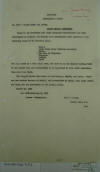
|
27.
February 5, 1931. G-2
Report on Recent Marine
Activities in Nicaragua, Lt.
Col. Fred T. Cruse, Military
Attaché, San José.
"NICARAGUA ¶ POPULATION & SOCIAL
¶ No. 2700 – Public Order and
Safety. ¶ Recent Marine
Activities. ¶ Owing to the
frequency with which telegraph
communication has been
interrupted by bandits, the
Marines have established radio
stations in the following towns
of the Northern area:- ¶ Ocotal
¶ Santa Maria (Near Honduran
Frontier) ¶ Jalapa ¶ San Juan de
Telpaneca ¶ Telpaneca ¶ Quilali
¶ Apali ¶ The last named is a
very small town, but near it is
the closest landing field to the
bandit area and consequently it
is important to have radio
communication with this field. ¶
The largest Marine Garrisons are
now Managua, Ocotal, and Apali.
There are two hundred Marines in
Ocotal, and ninety-five in
Apali, this large garrison being
for the protection of the
landing field. ¶ Report No. 1081
¶ San José--February 5, 1931 ¶
Source – Newspapers. ¶ Fred T.
Cruse, ¶ Lieut. Col., F.A. ¶
M.A."
|
|
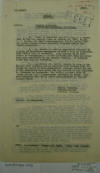
|
28.
February 3, 1931. Secret
G-2 Report on Sandino and the
Nicaraguan Situation, Copy of a
report of C. W. Martin of the
Los Angeles Times
(Mexico City, Jan 29), Col.
Gordon Johnston, Military
Attaché, p. 1.
"G-2 Report ¶ 3850: ¶ MEXICO ¶
POLITICAL ¶ SUBJECT: Foreign
Relations: ¶ SANDINO and
Nicaraguan Situation. ¶ 1. There
is forwarded herewith copy of a
report sent to the Los Angeles
Times on January 29, 1931, by
Mr. C. W. Martin, its staff
correspondent, now in Mexico
City. Mr. Martin seemed rather
favorably disposed toward the
Zepeda propaganda. ¶ 2. Mr.
Martin is with an expedition
financed by a group of
California newspapers to make a
trop by automobile from Mexico
City to Guatemala. They propose
to go from Oaxaca to
Tehuantepec.- So far as known,
this trip has never been made
heretofore by any wheeled
vehicle. It normally takes four
days by horseback. ¶ 3.
Apparently Mr. Martin intends to
have an interview with Sandino,
and is provided with letters
from Dr. Zepeda to assist in
this enterprise. Neither Martin
nor any of his companions have
asked for any letters to our
Legations in Nicaragua or
Guatemala. Mr. Martin carries a
card as “Agent of the O.N.I.”,
previously operating in China.
His card indicates that he is
staff correspondent of the Los
Angeles Times. . . . ¶ Gordon
Johnston, ¶ Colonel, Cavalry ¶
Military Attaché. ¶ Source: As
indicated. ¶ J/p ¶ From:
M.A.Mexico. ¶ Report No. 3226. ¶
Date: Feb. 3, 1931."
|
|
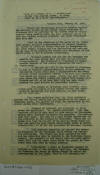
|
29.
February 3, 1931. Secret
G-2 Report on Sandino and the
Nicaraguan Situation, Copy of a
report of C. W. Martin of the
Los Angeles Times
(Mexico City, Jan 29), Col.
Gordon Johnston, Military
Attaché, p. 2.
" . . . (Copy of a report of C.
W. Martin, sent to the “Los
Angeles Times”, of which paper
he is a staff correspondent.) ¶
“Mexico City, January 29, 1931.
¶ “Bitter and unrelenting
guerrilla warfare against the
military forces of the United
States stationed in Nicaragua
will be continued by the hidden
army of General Augusto Cesar
Sandino until the last American
Marine has left the Central
American republic, and other
conditions have been met. ¶
“That is the substance of the
order of Dr. Pedro José Zepeda,
official representative of
General Sandino. Dr. Zepeda is
living in Mexico City and is
recognized as the power behind
Sandino and his declaration was
made, not in the form of an
opinion, but rather as a
statement of the orders given to
the Nicaraguan insurgents. ¶ “
‘General Sandino and his men are
fighting for exactly the same
things that are dear to the
citizens of any country. The
situation in Nicaragua is simply
another example of the strong
oppressing the weak’, Dr. Zepeda
said. ¶ “ ‘I believe that all of
the trouble in Nicaragua is due
to American misunderstanding of
our problems. If the United
States would send a
representative who would be like
former Ambassador Morrow, I am
sure that hostilities would end
within a week. During the past
three or four years the United
States and Mexico have become
good friends, and all of us know
that this has come about through
the good offices of Ambassador
Morrow. ¶ “ ‘The people of
Nicaragua want friendly
relations with the people of the
United States, but until
American oppression has been
removed, we will fight to the
last man.’ ¶ “Dr. Zepeda
explained that the first
complaint against the United
States had its inception in the
issue of Nicaragua bonds, the
payment of which was guaranteed
by the United States State
Department. ¶ “ ‘Payment of
interest and principal on these
bonds was defaulted’, Dr. Zepeda
continued, ‘and then American
officials were sent to take
charge of Nicaraguan custom
house receipts to insure the
payments. The Marines went with
them. But that is a very flimsy
excuse now for the retention of
the Marines in Nicaragua. There
now remains less than $1,000,000
to be paid on those bonds and
that sum would be paid within
forty-eight hours by public
subscription, if we had the
guarantee of national freedom. ¶
“ ‘Our greatest complaint is
against the manner of execution
of the Nicaragua Canal Treaty
and against its provisions. The
treaty was made secretly in 1914
and was submitted only in
English to the Nicaraguan
legislature. The contents of the
treaty were not made public
until 1917 and for those three
years the people of Nicaragua
were told that no treaty
existed. ¶ “ ‘Personally, I
would be decidedly opposed to
selling an inch of our national
territory, but inasmuch as
Nicaragua can never be strong
enough to resist the
construction of the canal, then
in all fairness, we . . . "
|
|
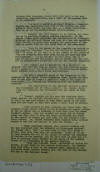
|
30.
February 3, 1931. Secret
G-2 Report on Sandino and the
Nicaraguan Situation, Copy of a
report of C. W. Martin of the
Los Angeles Times
(Mexico City, Jan 29), Col.
Gordon Johnston, Military
Attaché, p. 3.
" . . . believe that Nicaragua
should have some part in the
construction, administration,
and a share of the revenue when
it is completed. ¶ “ ‘We want in
addition, national freedom.
President Moncada has repeatedly
said that if the Marines are
withdrawn, he will resign the
next day, -- a clear indication
that he is not the
representative of the people. ¶
“However, our last thought is to
destroy our country or to
continue fighting without
necessity. If the United States
would guarantee the independence
of Nicaragua, withdraw its
military forces and give us a
new and equitable Canal Treaty,
we would even support the
government of Moncada or anyone
that was the legal head of the
government. ¶ “ ‘That is the
answer to the question now
raised in the American Congress,
“Why are the Marines in
Nicaragua?”, and I am going to
add that it is the answer to the
question “Why are American boys
shot down who do not know why
they are fighting?”. We do not
want to kill them, nor do we
want to see our own men killed,
but we cannot give up, submit to
intolerable conditions and see
our country enslaved.’ ¶ “Dr.
Zepeda, who is practising
[practicing] as a physician and
surgeon, has made his home in
Mexico City for fourteen years.
He is a graduate of the
University of Pennsylvania, and
holds honor degrees from several
other universities. ¶ “He told a
dramatic story of the discovery
of the contents of the United
States-Nicaragua Canal Treaty
and said that he was able to
secure a certified copy of the
paper in Washington, D.C.,
through his friendship with the
Nicaraguan Minister. ¶ “ ‘The
publication of the document
created a scandal throughout all
of Latin America’, Dr. Zepeda
added, ‘and the criticism and
bitterness has not ended to this
day’. ¶ “General Sandino and his
army can continue their fight
against the Marines
indefinitely, Dr. Zepeda
believes. He said the men were
broken up into small units of
not more than 200 and these in
turn were given a small area to
patrol. ¶ “With rations of corn,
bananas and sugar cane, the
Sandino troops remain hidden in
the jungles, to appear suddenly
for an attack and as suddenly to
slip back into the dense
tropical growth. Sick and
wounded are cared for in hidden
camps and from time to time men
whose usefulness has ended as
the result of wounds are sent
home and new recruits take their
places. Dr. Zepeda declared that
Sandino daily refuses dozens of
men who are anxious to join his
forces. ¶ “ ‘Many Americans
suppose that General Sandino and
his men represent only the
minority of Nicaraguan opinion’,
Dr. Zepeda said, ‘but I am sure
that if they will think a
little, they will find they are
mistaken. First of all, it is
very natural for all the people
to resent the presence of
Marines in the country, and the
fact that so many men are able
to continue their warfare in all
parts of the country should be
an indication of the general
feeling. ¶ “ ‘Even the National
Guard, officered by Marine
officers, is not loyal to the
Moncada government. My reports
show that fully half of the
machine guns, ammunition and
equipment which General Sandino
has, has come to him through the
men of the National Guard.’ . .
. "
|
|
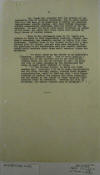
|
31.
February 3, 1931. Secret
G-2 Report on Sandino and the
Nicaraguan Situation, Copy of a
report of C. W. Martin of the
Los Angeles Times
(Mexico City, Jan 29), Col.
Gordon Johnston, Military
Attaché, p. 4.
" . . . “Dr. Zepeda has promised
that the caravan of the
Automobile Club of Southern
California, due to leave Mexico
City in a few days on an
expedition to survey the
proposed international Pacific
Highway, will pass through
Nicaragua without encountering
resistance from the troops of
the insurgents. He said the
party could enter Nicaragua by
either of two roads, but added
that these roads were guarded by
large forces of Sandino rebels.
¶ “Many of the statements made
by Dr. Zepeda are similar to
those of José Constantino
Gonzalez, General Sandino’s
secretary, who recently arrived
in Mexico City from Nicaragua.
Gonzalez came to the Mexican
capital for a conference with
Dr. Zepeda, and was even more
outspoken than the physician in
his declaration that the Central
American rebels would continue
their fight until American
forces are withdrawn. ¶ “ ‘We
shall carry on the strife to an
incredible ferocity’, Gonzalez
said, ‘and we shall keep up a
bloody war in the Segovias and
in the rest of the country where
our men are willing to act. We
shall set fire to towns occupied
by the Marines, and the drama of
death shall continue to reign. ¶
“ ‘If the Marines retire, we
shall not fight another day.
Nicaragua will be in peace
automatically and the North
American people, through their
highest representatives, would
in that way give a true
demonstration of justice and
respect for other countries, and
the phrase of the Father of
North American Independence
would be effective: “Destiny has
made us neighbors, let mutual
respect make us brothers”.’"
|
|
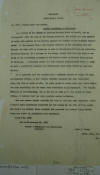
|
32. January 23, 1931.
G-2 Report on Bandit Conditions
in Nicaragua, Lt. Col. Fred T.
Cruse, Military Attaché, San
José.
"NICARAGUA ¶ POPULATION & SOCIAL
¶ No. 2700 – Public Order and
Safety. ¶ Bandit Conditions in
Nicaragua. ¶ As a result of the
ambush of American Marines North
of Ocotal, and by arrangement
with the head of the Guardia
Nacional, the policy has been
adopted of using only members of
the Guardia against the bandits
in the Northern Departments. At
the present time a few Guardia
officers in the disturbed area
are Marines but they will be
withdrawn as soon as Nicaraguan
officers are available.
President Moncada, in a message
to the Press, stated that this
was done on account of the
resentment produced in the
United States by Marines being
killed in Nicaragua. A secondary
reason was that Sandino
propagandists would no longer
have a pretext for stating that
Nicaraguans were being killed by
American Marines. ¶ It is
apparent that the bandits have a
definite source of supply of
arms, particularly rifles, as
most rifles recently captured
are new, high-power guns, but
with no marks at all. In other
words it seems clear that these
rifles are made especially for
use under such conditions as in
Nicaragua. The Guardia Nacional
is investigating, but so far has
no hint as to the source of
these rifles. I believe that the
only possible source is Mexico.
¶ The most recent bandit
activity has been in the area
near Telpaneca, where a patrol
under Lieutenant Broderick had
two fights on the 12th of this
month. One bandit was killed,
three wounded, two captured and
several large bandit camps and
stores of provisions were
destroyed. ¶ Report No. 1065 ¶
San José--January 23, 1931 ¶
Source – Newspapers and
Nicaraguan Legation. ¶ Fred T.
Cruse, ¶ Lieut. Col., F.A. ¶
M.A."
|
|
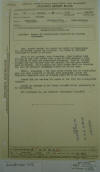
|
33.
January 12, 1931.
Confidential Naval Intelligence
Report on Sandino, Report of
Conversation Overheard by
Reliable Informant.
"One, Arturo Rovelo, who spent
one night in Tegucigalpa and
thereafter headed for Salvador,
was heard by reliable informant
to state as follows: ¶ That he
was present, near Matagalpa,
when Sandino told his men he and
five others were going to Cabo
Gracias a Dios to receive an
arms and ammunition shipment.
That he (Arturo Rovelo) did not
believe this but thought the six
were headed back to Mexico. That
Sandino and five others left the
Segovias and that he (Rovelo)
thereupon shoved off on his own.
¶ NOTE:- Computed; - The time
since Rovelo was in Tegucigalpa
plus the time required to travel
from Matagalpa, would put
Sandino’s departure date as
roughly about 28 to 31 December.
¶ Rovelo did not mention the
names of the five who
accompanied Sandino. ¶ Rovelo is
unknown to the Naval Attaché
either personally or by
reputation. ¶ The informant is,
and believed thoroughly
reliable."
|
|
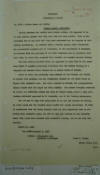
|
34.
January 6, 1931. G-2
Report on Recent Bandit
Activities in Nicaragua, Lt.
Col. Fred T. Cruse, Military
Attaché, San José.
"NICARAGUA ¶ POPULATION & SOCIAL
¶ No. 2700 – Public Order and
Safety. ¶ Recent Bandit
Activities. ¶ During December
the bandits were fairly active,
but appeared to be in much
smaller groups than they have
been for some months. This is
undoubtedly due to the fact that
they were scattered for the
purpose of collecting
provisions. On December 20th a
Guardia patrol under Lieutenant
Lee encountered bandits near El
Trocadero, in the Department of
Jinotega. On December 22nd the
garrison of San Juan Telpaneca
had an encounter near that town,
in which they captured four
bandits and wounded several
others. ¶ The most serious
feature which has appeared in
some time is the enormous flood
of Sandino propaganda resulting
from the recent killing of a
Sergeant and several other
Marines in an ambush North of
Ocotal. ¶ There is never any
publicity when members of the
Guardia are killed in fights
with bandits, and the Sandinista
element do not claim these as
fights with Sandino’s men. But
when a marine is killed, the
propagandists always insist that
the fight was with Sandino. The
recent occasion referred to
above, was reflected within two
days in Buenos Aires, where a
long pro-Sandino editorial
appeared in El Comercio, one of
the leading newspapers. ¶ The
one way to stop this propaganda
is to not let marines be killed,
in other words let the Guardia
alone handle the bandit
situation. It will be remembered
that the thing Tenorio said was
most important when he returned
from Sandino’s camp, was not to
keep the marines in any locality
where they might have contact
with Sandino’s forces, but to
use only the Guardia. ¶ Report
No. 1034 ¶ San José--January 6,
1931 ¶ Source – Newspapers and
personal knowledge. ¶ Fred T.
Cruse, ¶ Lieut. Col., F.A. ¶
M.A."
|
|
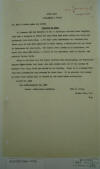
|
35.
December 18, 1930. G-2
Report on Shipment of Arms, Lt.
Col. Fred T. Cruse, Military
Attaché, San José.
"COSTA RICA ¶ POPULATION &
SOCIAL ¶ No. 2700 – Public Order
and Safety. ¶ Shipment of Arms.
¶ On December 4th the Ministry
of War in Nicaragua informed
their Legation here that a
shipment of rifles had been
taken from Rivas toward the
South and presumably into Costa
Rica. A few days later
information was obtained that
these cases of arms were
addressed to Fabio Guerra, a
Nicaraguan who has lived in
Puntarenas for some years. The
rifles never showed up in
Puntarenas, but about that time
León Guerra, a brother of the
addressee, went to Liberia, and
probably further North. ¶ Owing
to the fact that the Guerra
brothers were Nicaraguans, the
Nicaraguan Legation here thinks
that these arms were merely sent
out of the country to prevent
their being found and seized by
the Guardia. There is no
evidence that they were intended
for any movement in Costa Rica.
It is probable that sooner or
later these rifles will be
located by the Costa Rican
authorities. ¶ Report No. 1013 ¶
San José--December 18, 1930 ¶
Source – Nicaraguan Legation. ¶
Fred T. Cruse, ¶ Lieut. Col.,
F.A. ¶ M.A."
|
|
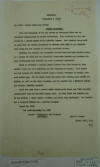
|
36. December 11, 1930.
G-2 Report on Nicaraguan Bandit
Situation, Lt. Col. Fred T.
Cruse, Military Attaché, San
José.
"NICARAGUA ¶ POPULATION & SOCIAL
¶ No. 2700 – Public Order and
Safety. ¶ Bandit Situation. ¶
With the beginning of the dry
season in Nicaragua there was an
immediate reappearance of bandit
activities. This conforms to
what was stated in a recent
report would probably happen.
The bandits, being able to move
over the trails unhampered by
weather were able to get
together into bands for the
purpose of getting something to
eat. ¶ However, the Guardia had
evidently forseen [foreseen]
this and made careful plans, as
a result of which the two
principal bands were located and
attacked almost immediately upon
forming and were thoroughly
scattered. ¶ Early in November a
Guardia patrol located the band
headed by Diaz Leytón, which had
been operating in the vicinity
of Telica. This bandit was the
asassin [assassin] who killed
Colonel Lopez y Lopez, Governor
of Esteli, several months ago.
In the fight which took place
near Telica, Diaz Leytón was
killed, as well as six other
bandits, and the Guardia had a
Sergeant killed and another
mortally wounded. ¶ About the
same time a patrol under
Lieutenants Kerns and White
located Altamirano’s band in the
Peña Blanca area. In this fight
the bandits had 14 men killed, a
large number wounded, and their
camp destroyed. The Guardia had
a Sergeant killed and a private
wounded. ¶ Report No. 1004 ¶ San
José--December 11, 1930 ¶ Source
– Newspapers and Personal
knowledge. ¶ Fred T. Cruse, ¶
Lieut. Col., F.A. ¶ M.A."
|
|
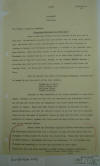
|
37.
December 3, 1930. G-2 Report on
Nicaraguan Emigrados in Costa
Rica, Lt. Col. Fred T. Cruse,
Military Attaché, San José.
"(COPY) ¶ (2657-P-241) ¶ 235 ¶
NICARAGUA ¶ POLITICAL ¶ No.
3700-b – Political Leaders. ¶
Nicaraguan Emigrados in Costa
Rica. ¶ About a week ago Toribio
Tijerino arrived in San Jose and
is here now. He arrived so
quietly that his presence was
not known until yesterday. He
states that he came from
Salvador by plane with the
intention of landing at Managua
and remaining in Nicaragua, to
attend to his personal business
affairs. When the plane landed
it was met by a representative
of the President who ordered
Tijerino to continue on to some
other Republic. As the latter
had no visa for Costa Rica,
Panama, or any country in South
America, the plane was held
until the Costa Rican Consul in
Managua could reach the landing
field. He there gave Tijerino a
visa permitting him to enter
Costa Rica. ¶ With his arrival
the group of Nicaraguan
Emigrados residing here is
headed by the four worst of the
lot, namely:- ¶ Solomon de la
Selva ¶ Adolfo Ortega Diaz ¶
Guillermo Lacayo ¶ Toribio
Tijerino ¶ Tijerino is very
resentful at not being permitted
to enter Nicaragua. However, he
does not know that the
Government has discovered that
he was the man who buried arms
and ammunition near Murra which
were Sandino’s source of supply.
These arms were bought in
Honduras by Tijerino for the
Sacasa Revolution, and what the
Liberals resent is not the fact
that Tijerino could not get the
arms to Moncada’s forces in
time, but the fact that he never
notified the Liberal leaders
that these arms had been buried
and were being used by the
Sandino forces. ¶ About a week
ago President Moncada’s Private
Secretary notified the
Nicaraguan Minister here that a
shipment of arms had been taken
from the vicinity of Rivas
across the border into Costa
Rica. These arms were addressed
to Fabio Guerra, a Nicaraguan
who lives in Puntarenas. It is
believed that Tijerino had
something to do with the
acquiring of these arms. ¶
Report No. 993, San Jose,
December 3, 1930; Source,
personal knowledge. ¶ Fred T.
Cruse, Lieut. Col., F.A., ¶
M.A."
|
|
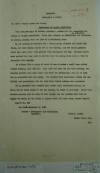
|
38.
December 3, 1930. G-2
Report on Recurrence of Bandit
Activities in Nicaragua, Lt.
Col. Fred T. Cruse, Military
Attaché, San José.
"NICARAGUA ¶ POPULATION & SOCIAL
¶ No. 2700 – Public Order and
Safety. ¶ Recurrence of Bandit
Activities. ¶ The last few days
of October produced a sudden but
not unexpected increase in
bandit activities. These were
clearly an effort to interfere
with the elections in certain
places, with the idea of
invalidating them. ¶ On the
morning of election day a strong
group attacked San Rafael del
Norte, but were easily driven
off by the Guardia, and two
combat patrols which were sent
after them pursued them
throughout the day. Neither
patrol made contact but they
made it certain that the group
would have no time to interfere
with anybbdy [anybody]. ¶ On
October 31st a group of about 40
men attacked a small town called
Cuidad Antigua [Ciudad Antigua],
near Quilali. They took the town
and did some looting, but
Guardia patrols were sent after
them from two directions, and
one of them had an encounter
with the group. The bandits were
scattered, losing two men
killed, and practically all the
loot from Cuidad Antigua [Ciudad
Antigua] was recovered. ¶ It is
probable that bandits will renew
their activities during the
first two or three weeks of the
dry season, in order to get
food. After this Guardia patrols
will be able to move freely and
the bandits will have no chance
to remain in the field in groups
until the next rainy season
begins. ¶ Report No. 996 ¶ San
José--December 3, 1930 ¶ Source
– Newspapers and Nicaraguan
Legation. ¶ Fred T. Cruse, ¶
Lieut. Col., F.A. ¶ M.A."
|
|
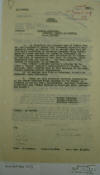
|
39.
November 27, 1930.
Confidential G-2 Report on
"General" Rafael de Nogales and
C. A. Sandino, Col. Gordon
Johnston, Military Attaché, p.
1.
"G-2 Report ¶ 3850: ¶ MEXICO ¶
POLITICAL ¶ SUBJECT: Foreign
Relations: ¶ “General” Rafael de
Nogales: ¶ C. A. SANDINO. ¶ 1.
In forwarding the attached copy
of letter from Mr. Otto Holstein
of Mexico City (formerly Major,
MID Res.) regarding Rafael de
Nogales, G-2 is advised that
this office has a collection of
clippings covering daily
instalments of a book entitled
“El Saqueo de Nicaragua”, by
Nogales. These instalments were
published by “La Prensa” of this
city in November of last year,
in Spanish, being translated
from the English. The book
itself, “The Looting of
Nicaragua” is in Ebglish
[English]. ¶ The “Prensa”
articles carried a prologue by
Dr. Pedro J. Zepeda, Sandino’s
representative in Mexico. The
articles, after covering four or
five chapters of the book,
stopped suddenly, without
explanation. ¶ If G-2 desires
this file of clippings, it will
be forwarded, upon indication. ¶
2. There are also forwarded
herewith translations of two
recent articles which appeared
in “La Prensa” on November 12
and 20, 1930, respectively,
entitled “Sandista [Sandinista]
Activities”, and “Yankee Marines
in Nicaragua daily sustaining
losses”. ¶ Gordon Johnston, ¶
Colonel, Cavalry, ¶ Military
Attaché. ¶ Source: As stated. ¶
J/p ¶ From: M.A.Mexico. ¶ Report
No.3154. ¶ Date: Nov. 27, 1930.
. . . "
|
|
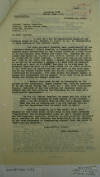
|
40.
November 27, 1930.
Confidential G-2 Report on
"General" Rafael de Nogales and
C. A. Sandino, Col. Gordon
Johnston, Military Attaché, p.
2.
" . . . COPY ¶ Apartado 1833 ¶
Mexico City, D.F. ¶ CONFIDENTIAL
¶ November 24, 1930. ¶ Colonel
Gordon Johnston, ¶ Cavalry,
United States Army, ¶ Military
Attaché, ¶ Mexico, D.F. ¶ My
dear Colonel: ¶ I came by a bit
of information which, if not
already known to G-2, should, it
occurs to me, be communicated to
that section of the General
Staff. ¶ You have yourself
probably read occasionally of
one “Division General” Rafael
Nogales, a Venezuelan who
advertises himself quite
extensively in the United States
as a late General in the Turkish
Army during the World War.
Nogales has succeeded in
insinuating himself into certain
circles in the United States and
in Latin America. I have seen
him at the Explorers’ Club in
New York, and while I cannot say
definitely whether or not he is
actually a member I do know that
he receives his mail, or a part
of it, there, and that he is
very much in evidence there as
well as at other Clubs and in
other circles. He has even been
to Mexico and has had much to
say both here and in the United
States about the United States
Government’s activities in
Nicaragua. For some reason our
people appear to ignore his
propaganda and he appears to be
able to go on criticising
[criticizing] and airing his
stupid opinions. ¶ I have a very
good friend in Washington in the
person of His Excellency, Ahmed
Mouhtar Bey, Turkish Ambassador
to the United States and I have
for a long time suspicioned
Nogales’ accounts of his own
prowess and recently wrote to
Mouhtar Bey who has given me the
following in the form of a
confidential memorandum: ¶ “As
for Mr. Rafael Nogales, he never
had the title of ‘General’ and
although he once served in the
Turkish Army, I do not believe
that he ever had a higher grade
than the one of Captain and I do
not believe that he has the
importance that he would care to
have.” ¶ This man Nogales, in a
few words, is a fourflusher of
the worst kind; he has much to
say about American “Imperialism”
and is constantly –when he isn’t
talking about his own imaginary
exploits- stirring up
anti-American sentiment while
residing in and enjoying the
hospitality of our country. He
has even succeeded in
insinuating himself into the
pages of “Who’s Who in America”.
¶ Respectfully yours, ¶ OTTO
HOLSTEIN. . . . "
|
|
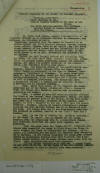
|
41. November 27, 1930.
Confidential G-2 Report on
"General" Rafael de Nogales and
C. A. Sandino, Col. Gordon
Johnston, Military Attaché, p.
3.
" . . . (Translation) ¶ (Article
appearing in “La Prensa” of
November 12, 1930) ¶ “SANDISTA
[SANDINISTA] ACTIVITIES. ¶ Heavy
fighting in Ias. ¶ Augusto
Sandino returns to the head of
his troops. ¶ The North American
marines have suffered serious
losses in recent encounters with
the rebels. ¶ Dr. Pedro José
Zepeda, General Representative
of the “Ejercito Defensor de la
Soberania Nacional de
Nicaragua”, has delivered the
following bulletin: ¶
“Completely recovered from the
wounds he received in an action
against the North American
marines, General Augusto Cesar
Sandino, Supreme Chief of our
heroic Army, has taken direct
command of his troops and has
intensified the campaign, which
has now taken a more favorable
turn, as the rainy season is on
in full, protecting the
movements of our columns. ¶
“During the time General Sandino
was recovering from his wound,
the army units under Generals
Altamirano, Orthez, Irías and
Blandón fought stubbornly
against the invading forces, but
under the skilful [skillful]
direction of the Supreme Chief,
The following battles took
place: ¶ “1st. The combined
forces of the expeditionary
commanders, Generals Pedro
Antonio Irías and Miguel Angel
Orthez fought an engagement in
the town of Independencia,
Department of Jinotega. The
enemy casualties were 60, dead
and wounded, while our side
captured 75 rifles,
Springfields, 3,000 cartridges,
and 2 surgery outfits, as well
as abundant provisions. Our
casualties were: 1 lieutenant
colonel, 1 captain, and 12
soldiers, killed; 5 officers and
10 soldiers wounded. ¶ “2nd.
Three days later, in “La
Soledad” the enemy surprised one
of our flying columns, and after
a desperate fight our forces
were defeated, having lost in
retreat ammunition and horses. ¶
“3rd. A column of over 100
American marines attacked the
house of our General Pedro
Altamirano’s family, and upon
attempting to capture some of
the family, firing took place
and Pedro and Victorina,
children of the General, were
killed, as also a daughter in
law and a five year old
granddaughter. Melesio, another
of General Altamirano’s younger
children was also gravely
injured and it is feared he will
not live. Aid coming from one of
our detachments compelled the
invaders to retreat, leaving on
the field 7 dead and 3 wounded.
¶ “4th. On the 23d of October
Col. Perfecto Chavarria, on the
ranch “La Pavesa” laid an ambush
for the enemy, wounding many and
compelling them to a precipitate
flight. Col. Chavarria furnished
the enemy food supplies and
medicines. ¶ “5th. Two days
later the forces of Col.
Fulgencio Hernández Báez
compelled the enemy to fight
along the River Ducuale between
the towns of Palacaguina and
Condega. As in nearly all
instances, our men chose the
location most favorable as to
terrain. As our attack surprised
the enemy, they offered almost
no resistence [resistance];
however, they lost 3 killed, and
5 national guards killed; and 25
enemy wounded were taken from
the field. Arms, raincoats, etc.
were also captured. ¶ “In the
latest communication received, a
bloody fight is now going on in
Ias, on the banks of the Rio
Grande; results will be reported
as soon as details have been
received. . . . "
|
|
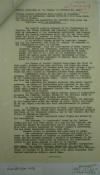
|
42. November 27, 1930.
Confidential G-2 Report on
"General" Rafael de Nogales and
C. A. Sandino, Col. Gordon
Johnston, Military Attaché, p.
4.
" . . . Article appearing in “La
Prensa” of November 20, 1930. ¶
“Yankee Marines suffering daily
losses in Nicaragua. ¶ If
Moncada is reelected, another
revolution will take place. ¶
Burning of Fincas. ¶ The
Sandinistas are destroying the
redoubts from which the
Americans carry on espionage. ¶
The rapidly growing movement of
the Nicaraguans in fighting the
Yankee invaders and President
Moncada, who is only an
instrument of the Washington
government, has already alarmed
the Moncada Government which now
for the first time gives the
title of ‘rebels’ to those
fighting under Sandino, formerly
called Bandits, criminals, etc.
¶ In an official decree signed
by President Moncada and all his
Ministers, the title of ‘rebels’
is conceded to the Nicaraguans
in arms, as follows: ¶
“Considering: That the
Departments of Nueva Segovia,
Jinotega, Estelí and Metagalpa
[Matagalpa], continue in the
same abnormal circumstances of
rebellion maintained by armed
bands; and that it is a duty of
the Executive Power to guard the
public peace and safety
threatened in those sections, it
becomes necessary to declare
those Departments in a state of
seige [siege].” ¶ The forces of
General Sandino have, since the
first of this month, entered
into open activity, and since
the seige [siege] and taking of
Matiguas the Yankees have not
been allowed a day’s rest, and
have sustained many losses, as
well as the National Guard who
still insist in fighting against
their countrymen[.] ¶ Lieutenant
White, at the head of a column
of Yankee marines, was defeated
in El Guapotal, Department of
Jinotega, by 200 Sandinistas,
perfectly armed. Lieut. White
was wounded and died the
following day. ¶ The rebellion
has already extended from Nuevo
Segovia westward, as groups of
Sandinistas have appeared in the
León zone. In Las Mercedes the
Sandinistas defeated the
National Guard under command of
sergeant Nicolás Díaz, several
guards being wounded and 2
killed. ¶ In the same western
region another group of
Sandinistas attacked and
defeated another column of the
National Guard in El Cocotón,
the Guards sustaining several
losses. ¶ The column under
Lieutenant Kearns, which was
beseiged [besieged] by the
Sandinistas after the defeat of
Lieut. White, was located by the
Yankee aviators who sent
reinforcements to protect them.
¶ In Coyolar, jurisdiction of
Yalí, Department of Jinotega,
the Sandinista column under
General Pedro Blandón occupied
the finca of Sr. Inocencio
Castro, a spy of the Yankees,
who was killing in defending
himself. ¶ Another Yankee
lieutenant named Trogle was
killed by the Sandinistas. ¶ The
hacienda “La Constancia” owned
by Sr. Enrique Frewin, who has
also been acting as a spy for
the Yankees, was seized and
burned by Sandinistas; and in
Quilalo, which they also took,
several employees of General
Moncada’s government, who had
shown themselves hostile, were
shot. ¶ Moncada wishes to
continue two years more in
power. ¶ The discontent
throughout Nicaragua has grown
on account of the intention of
Moncada to perpetuate himself in
power and has already prepared a
project of amendments to the
Constitution, among others, that
of extending the Presidential
period to six years, instead of
four as at present. ¶ This plan
of Moncada has produced general
indignation even among the
liberal elements themselves who
support him, and several
outstanding personalities are
opposing this project, which, if
allowed to be carried out, will
carry Nicaragua into another
revolution within a short time."
|
|
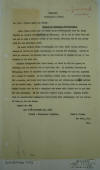
|
43. November 26, 1930.
G-2 Report on Capture of
Newspaper Correspondent (St.
Louis Post-Dispatch Special
Correspondent Henry Lepidus),
Lt. Col. Fred T. Cruse, Military
Attaché, San José.
"NICARAGUA ¶ POPULATION & SOCIAL
¶ No. 2700 – Public Order and
Safety. ¶ Capture of Newspaper
Correspondent. ¶ About three
months ago the Saint Louis
Post-Dispatch sent Mr. Henry
Lepidus as special correspondent
to Nicaragua. He is one of their
best men and was to make a
general survey of the bandit
situation and of the survey work
for the Nicaragua Canal. ¶ He
spent several weeks in Matagalpa
and then, after having written a
number of letters to Pedro
Altamirano, he started for
Jinotega. Before he left he
informed the Marines that he had
received no replies to any of
the letters he had sent out. ¶
Lepidus disappeared for three
weeks, at least he did not
appear in Jinotega and the
Marines had no word from him. He
recently returned to Matagalpa,
where he reported that enroute
to Jinotega he had been captured
by a group of bandits. He was
wearing a khaki suit, was
therefore mistaken for a marine,
and would have been killed had
not Altamirano himself arrived
at the bandit camp. Lepidus
states that he was finally able
to convince the bandit leader
that he was a newspaper man
whose sole object was to get
data for his newspaper. He was
released without being harmed.
Lepidus states that he secured
most unexpected information from
Altamirano, but the nature of
this is not yet known. ¶ Report
No. 984 ¶ San José--November 26,
1930 ¶ Source – Nicaraguan
Legation. ¶ Fred T. Cruse, ¶ Lt.
Col., F.A. ¶ M.A."
|
|
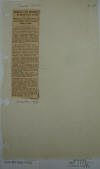
|
44.
November 14, 1930.
"Martial Law Decreed in
Nicaragua Again," New York
Times.
"MARTIAL LAW DECREED IN
NICARAGUA AGAIN ¶ Renewed in
Four Departments to Curb
Bandits—Marine Sergeant Killed
in Action. ¶ Wireless
to THE NEW YORK TIMES. ¶
MANAGUA, Nicaragua, Nov.
13.—President Moncada today
issued a decree re-establishing
martial law in the departments
of Esteri [Estelí], Neuvo
Segovia [Nueva Segovia],
Jinotega and Matagalpa. ¶ Those
departments were under martial
law from Jan. 9, 1929, to July
8, 1930, at which time it was
raised to insure free elections.
It has been re-established to
protect lives and property from
the bandits operating in the
territory. ¶ Special to The New
York Times. ¶ WASHINGTON, Nov.
13.—The Navy Department
announced today that Sergeant
Russell White of the Marines,
who was serving with the
Nicaraguan National Guard, had
been killed in action with
bandits at Guapinol in the
province of Leon. ¶ Sergeant
White was shot in the right
lung. A patrol which sought to
bring his body out of the bandit
area was unable to do so, and
the body was buried near the
spot where the action was
fought. ¶ Colonel D. C. McDougal
of the Marines, who is in
command of the Nicaraguan guard,
wired the department that
searching patrols were looking
for but had not yet located the
patrol which endeavored to bring
out the body. ¶ Sergeant White
was a native of Cambridge,
Mass., his nearest of kin being
an aunt, Miss Mary Mason of of
14 Centre Street, that city. ¶
MEXICO CITY, Nov. 13
(AP).—Representatives of the
Nicaraguan insurgent chieftain,
Agustino Sandino, today that
Pedro Jr. and Victoriano
Altamirano, sons of Sandino’s
principal aide, Pedro
Altamirano, had been killed in a
fight with United States
marines. ¶ Another son, Melecio,
was said to have been severely
wounded in the encounter, which
centred about the Altamirano
homestead. Sandino himself was
said to have recovered from
recent wounds and to have
reassumed charge of his men."
|
|
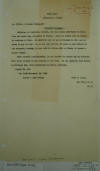
|
45.
November 10, 1930. G-2
Report on Socrates Sandino, Lt.
Col. Fred T. Cruse, Military
Attaché, San José.
"COSTA RICA ¶ POPULATION &
SOCIAL ¶ No. 2900-c – Foreign
Propaganda ¶ Socrates Sandino. ¶
Ceferino, or Socrates, Sandino,
who was denied admittance to
Costa Rica two weeks ago,
proceeded to Panama. There he
stated that he wanted to
continue to Peru. He admitted
that he had no friends in Peru
and no money to pay his way. As
he had only $35.00, of which he
owed $30.00 to the steamship
company, he was held in Balboa
Jail as likely to become a
public charge. ¶ After careful
investigation, it was decided to
return him to Salvador, from
which country he had started on
his trip. He was deported from
Panama on November 8th, with
destination La Union, Salvador.
¶ Report No. 969 ¶ San
José--November 10, 1930 ¶ Source
– Zone Police ¶ Fred T. Cruse, ¶
Lt. Col., G. S. ¶ M. A."
|
|
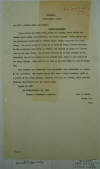
|
46.
October 30, 1930. G-2
Report on Bandit Situation in
Nicaragua, Lt. Col. Fred T.
Cruse, Military Attaché, San
José.
"NICARAGUA ¶ POPULATION & SOCIAL
¶ No. 2700 – Public Order and
Safety. ¶ Bandit Situation. ¶
There remain now three small
groups of bandits, whose chiefs
are Miguel Angel Ortez, Pedro
Blandon, and Carlos Salgado.
These groups are now definitely
restricted to limited areas,
widely separated from each
other. The group headed by Ortez
is in Valle de Colon, Blandon
operates in the mountanous
[mountainous] area North of
Ocotal, and Salgado is along the
Western part of the Coco river.
The Guardia Nacional is in full
control of the situation, but is
not active at the present time,
which is the height of the rainy
season. They will not be able to
do much until the end of
November. ¶ Both Sandino and
Altamirano have apparently been
eliminated as factors in the
situation. The bandit groups
will have a short breathing
spell as a result of the rainy
weather, combined with fog and
clouds, which prevents airplane
observation over the bandit
area. ¶ Report No. 961 ¶ San
José--October 30, 1930 ¶ Source
– Nicaraguan Legation. ¶ Fred T.
Cruse, ¶ Major, G.S. ¶ M.A."
|
|
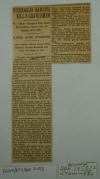
|
47.
November 8, 1930.
"Nicaragua Bandits Kill 6
Guardsmen," New York Times.
"NICARAGUA BANDITS KILL
5 GUARDSMEN ¶ Five Other
Troopers Flee When Ammunition
Gives Out in Battle With 200. ¶
PLANES BOMB ATTACKERS ¶ United
States Marine Corps Fliers
Discover Burned Barrack and Take
Up Chase in Air. ¶
Wireless to THE NEW YORK TIMES.
¶ MANAGUA, Nicaragua, Nov.
7.—United States Marine Corps
planes, while making a
reconnoissance [reconnaissance]
of the Matiguas area today,
discovered that the National
Guard barracks there had been
burned by bandits. The planes
trailed the bandits and bombed a
group of ten. The others had
scattered. ¶ Reports received by
National Guard headquarters
indicate that a bandit group
under the leaders Altamarino,
Peralta and Blandon, attacked
the National Guard post at
Matiguas, in the Department of
Matagalpa, at 4 P. M. on
Wednesday. The bandit force
numbered about 200 and attacked
from all sides. There were ten
National Guardsmen stationed at
Matiguas. ¶ The attack lasted
until 10 P. M., when the
ammunition of the guardsmen was
exhausted. Five guards were
killed and the remaining five
escaped, arriving at Muymuy, a
larger guard post, yesterday at
1 o’clock. The Matiguas post is
under command of Sergeant
Bustamente, a Nicaraguan. ¶ On
reconnoissance [reconnaissance]
today marine planes noted the
ruins of barracks and other
buildings the bandits had
burned. They dropped notes in
Spanish asking the inhabitants
to place on the ground two
sticks in the form of a cross if
the town was Matiguas. The
inhabitants answered in the
affirmative. The fliers next
asked the Matiguans to place
sticks in the form of a cross if
bandits had attacked them and if
so to place three sticks in the
form of an arrow pointing in the
direction in which the bandits
had retired. ¶ The Matiguans
placed sticks pointing toward
the north. The marine planes
searched the vicinity at a low
altitude, finally locating a
bandit group numbering ten about
ten miles north of Matiguas.
Several of the bandits had red
plumes in their hats. ¶ The
planes bombed the group, which
immediately scattered in the
jungle. The fliers dropped
fifteen bombs where the bandits
had disappeared and spattered
the jungle with machine-gun
fire. ¶ Lieutenant Young and
Staff Sergeant Williams, pilots
of the planes, displayed courage
and ability in flying low over
the jungle. It is thought that
few of the bandit group escaped.
The remainder of the 200 had
dispersed. ¶ National Guard
headquarters reports that a
judge and other prominent
citizens of Matiguas credit the
National Guardsmen with putting
up an excellent fight and not
leaving until their ammunition
was exhausted. The official
guard statement says: ¶ “With
tremendous, unequal and
overwhelming odds against them,
it is considered that the guards
at Matiguas did remarkably well
to hold off an organized force
of 200 for six hours.” ¶ The
Department Matagalpa is
commanded by Captain D. A.
Stafford, United States Marine
Corps. A large patrol of
National Guardsmen and marines
have left to trail the bandits."
|
|
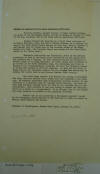
|
48.
October 30, 1930. Summary
of Intelligence on Brother of
Sandino [Sócrates Sandino] Held by Local Quarantine
Officials, Panama Canal Dept.
"Brother of Sandino Held by
Local Quarantine Officials. ¶
Socrates Sandino, younger
brother of Cesar Augusto
Sandino, the chief of the
Nicaraguan rebels, arrived at
Balboa on October 27, 1930, on
the S.S. Acajutla, and is now
being held by quarantine
officials. ¶ Sandino boarded the
Acajutla as a third class
passenger at La Union, Salvador,
under the name of Santos
Salazar, on a passport issued by
the Costa Rican Consul General
in Vera Cruz, Mexico, October 7,
and bearing visa for Costa Rica
by the Peruvian Consul at La
Union, October 22, 1930. The
Peruvian Consul was acting for
the Costa Rican Consul at the
latter place. ¶ Sandino’s
destination was Puntarenas,
where he was refused permission
to land by the Costa Rican
authorities on the ground that
his passport was a forgery. He
then continued aboard the
Acajutla to Balboa, where he is
being detained. He first stated
that he wanted to go to Peru on
the first available ship, but
afterwards said that he desired
to go to Barranquilla, Colombia,
but that the Colombian Consul in
Panama had refused to visa his
passport. He only had $30 which
is being held by the steamship
company for his passage from
Puntarenas to Balboa, but claims
that he can procure further
funds locally. ¶ The local press
reports that Sandino was living
in Brooklyn, New York, when his
brother first leaped into the
headlines a few years ago. He
promptly interested many
benevolently inclined persons in
contributing to a hospital fund
for wounded revolutionists. How
much of this fund actually
reached those for whom it was
intended has not been
ascertained. More recently he
has been living in Mexico and
Honduras, where he is known as a
propagandist. It is alleged that
he left Honduras under pressure
on account of his political
activity. ¶ Sandino has in his
possession a Nicaraguan passport
issued by the Nicaraguan Consul
General in New York May 4, 1928,
to travel in Mexico, South
America and Europe. ¶ (Summary
of Intelligence, Panama Canal
Dept., October 30, 1930.)"
|
|
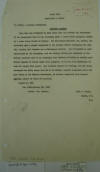
|
49.
October 29, 1930. G-2
Report on Sócrates Sandino, Lt.
Col. Fred T. Cruse, Military
Attaché, San José.
"COSTA RICA ¶ POPULATION &
SOCIAL ¶ No. 2900-c – Foreign
Propaganda. ¶ Socrates Sandino ¶
When this man attempted to gain
entry into the country via
Puntarenas it was discovered
that he was traveling under a
Costa Rican passport, issued by
a Costa Rican Consul in Mexico.
The Nicaraguan Minister, Mr.
Hazera, immediately sent a
formal complaint to the Foreign
Office concerning the matter,
stating that Sandino was a
Nicaraguan citizen. The
Government is much embarrassed
by the situation, and the
Foreign Office has indicated to
the Mexican Legation here it is
surprised that Mexican officials
so readily permitted Sandino to
travel under this passport, as
he has been well-known to them
for nearly four years. The
incident amounts to nothing, but
all those concerned are fully
aware that it is at bottom,
another indication that the good
faith of the Mexican Government,
in matters connected with
Central America, cannot be taken
for granted. ¶ Report No. 960 ¶
San José--October 29, 1930 ¶
Source – Mr. Hazera. ¶ Fred T.
Cruse, ¶ Major, G.S. ¶ M.A."
|
|
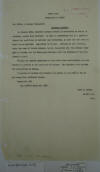
|
50.
October 27, 1930. G-2
Report on Sócrates Sandino, Lt.
Col. Fred T. Cruse, Military
Attaché, San José.
"COSTA RICA ¶ POPULATION &
SOCIAL ¶ No. 2900-c – Foreign
Propaganda. ¶ Socrates Sandino.
¶ On October 25th, Socrates
Sandino arrived at Puntarenas on
the S. S. Acajutla, coming from
Salvador. It will be remembered
that in a previous report his
activities in Salvador were
mentioned, as also the fact that
he might be an imposter.
Apparently he is not. Although
he was traveling under the name
of Santos Salazar, he was
recognized when the steamer
stopped at Corinto, and the
Nicaraguan Minister here was
informed of his projected
arrival. ¶ Sandino was denied
admittance by the Costa Rican
authorities, and was forced to
continue on the same boat to
Panama. The Legation here
advised the authorities in
Panama. ¶ I believe it certain
that Sandino was coming to San
José to try to get money from
Guillermo Lacayo. ¶ Report No.
955 ¶ San José--October 27, 1930
¶ Fred T. Cruse, ¶ Major, G.S. ¶
M.A."
|
United States National Archives, Record Group
165, Entry 77, Box 2653.
|
|
top of page |
|
|

